Three of these models are based on dual-cab utes - only the Toyota Prado is purpose-built, where the Everest is based on the Ranger, the Pajero Sport is spun off the Triton, and the Fortuner shares a lot of its underpinnings with the HiLux. But can they offer the comfort that families expect?
Well, let's look at their physical dimensions first and foremost, because chances are you mightn't have thought these vehicles were quite as close as they are when it comes to size and space.
Everest Titanium | Pajero Sport Exceed | Fortuner Crusade | Prado GXL | |
Length (mm) | 4969 | 4825 | 4795 | 4825 |
Width (mm) | 1869 | 1815 | 1855 | 1885 |
Height (mm) | 1837 | 1835 | 1835 | 1890 |
Wheelbase (mm) | 2850 | 2800 | 2745 | 2790 |
It's worth noting that our Prado GXL is the model with the flat tailgate, which is why it's fairly short - when you get the tailgate-mounted spare wheel you'll find the size stretches out to 4995mm. But this version is considerably more family-friendly, with a split-tailgate design that allows you to open the rear glass independent of the side-swinging back door. The others all have conventional tailgate designs with electric boot opening and closing, which is arguably more usable day-to-day.
Now, let's take a look at the boot space and capacity in a bit more detail. You might want to refer to the interior images to get an idea of how they compare for interior dimensions and boot dimensions, because there are some different capacity methodologies used.
Everest Titanium | Pajero Sport Exceed | Fortuner Crusade | Prado GXL | |
Boot space - 2 seats up | 2010L (SAE) | 1488L (VDA) | 1080L (VDA) | 974L (VDA) |
Boot space - 5 seats up | 1050L (SAE) | 502L (VDA) | 716L (VDA) | 553L (VDA) |
Boot space - 7 seats up | 450L (SAE) | 131L (VDA) | 200L (VDA) | 104L (VDA) |
Luggage capacity is one thing, but all four of these models have roof-rails so you can fit a roof-rack if you need it. All of them can also be fitted with a cargo barrier, and if you're as adventurous as these vehicles are, you might want to consider a boot liner. None come with a cargo cover, as it'd just get in the way.
When it comes to occupant comfort, all of these SUVs have air vents to all three rows, and all have seven seats capable of fitting adults. But the amount of time an adult might want to spend in the back row isn't equal - see our driving section for more on that.
As tested, all of these models had rear fan controls, but the Everest and Prado had a third climate zone so second- and third-row occupants could set the desired temperature independent to those up front. The Pajero Sport is equipped with dual-zone climate control (two temperature zones for the front-seat occupants), where the Fortuner only has a single-zone climate system.
Access to the third row varies, with the Prado offering the easiest ingress and egress via the left-hand side - it has a wider door opening and is much easier to step into. The Fortuner's third-row access was next best despite its doorway being a bit tight, and the same was the case for the Everest, which doesn't allow the seat base to fold up. Last for third-row access was the Pajero Sport, which doesn't have a sliding second row - it's a flip-and-tumble operation, and while smaller kids will be able to amble in with ease, adults could find it to be a bit of a squeeze.
The same can be said of the second-row occupant space in the Pajero Sport - because the seat doesn't slide fore and aft, the kneeroom for any long-limbed adults isn't as good as the others in this test. Headroom is fine, and it feels wider in the back than the Fortuner. That said, all vehicles here could fit a 182cm tall male adult behind his own driving position with ease.
All of these models have dual ISOFIX second-row child seat anchor points, as well as three top-tether points. But the Pajero Sport's top-tether hooks are mounted in the ceiling of the rear-most cargo space, rather than the back seat - meaning that anyone in the third row will suffer because there'll be straps eating into the space (that's if you can get into the back row at all). It all comes down to the fact the seat tumbles, and doesn't slide.
The Prado was judged best for second-row width, and it was pretty accommodating in most facets. The Fortuner's back seat was a narrower feeling place to be, but leg and head room was okay. And the Everest? It had good headroom in spite of the Titanium's panoramic glass sunroof eating up a few centimetres, but the dark headlining made it feel a bit cocoon-like. The width in the second row was second best, but it had good legroom.
All models have cup holders in a flip-down armrest (some better executed than others), plus each of these models has bottle-holders in all four doors. There are also cup-holders in the third row for each of these SUVs.

Now, let's take a look at the front cabins of these models.
The interior of the Prado feels a lot wider and it feels like there's more real estate - that's because there is. It's physically wider, and, as a result, there's a lot more usability to the cabin than in, say, the Fortuner. You even get a broader media screen with hard buttons either side of it, and dials to control the volume and tuner. It's very easy to use and everything is very logically laid-out.
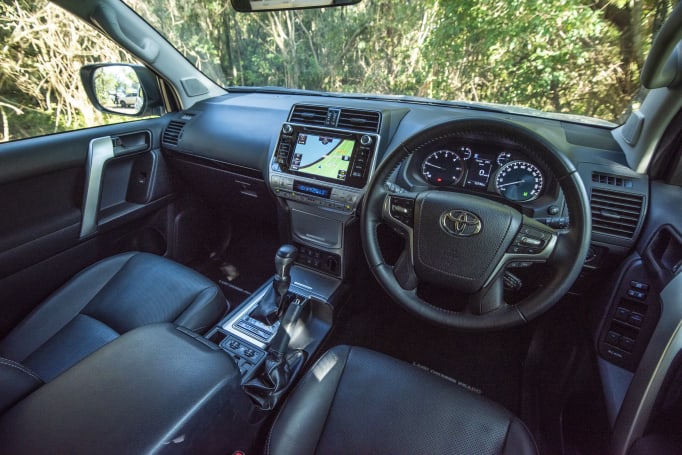
If you've never sat in a Prado, it won't take much learning. It's very intuitive, and you'll get to know it very well. And the storage is mostly pretty good, aside from the small L-shaped section near the (optional) seat heating and cooling controls, and it has easily the largest centre-console bin with cooling – perfect for road trips.
In the front of the Fortuner, by contrast, you're a bit close to the person next to you because it's quite a narrow cabin. There's not much in the way of loose storage in the front, but you get a pair of cupholders plus a smallish centre bin, and you also get a dual glovebox and dashboard-mounted cup-holders.
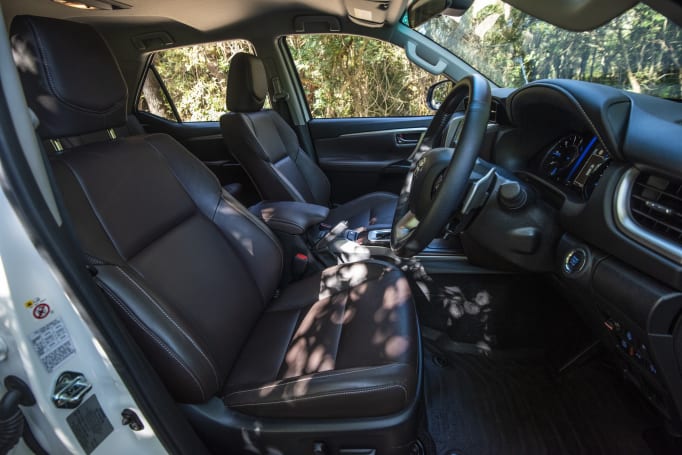
The dash design is okay, apart from the fact it eats into the space. However, there is no digital speedometer, and it's the only vehicle in this group that misses out on that important safety feature, which could be the difference between being fine, or being fined. Also, the silver edging of the JBL speakers that sit on top of the dashboard interrupt your peripheral vision, reflect oncoming vehicle head-lights and other light sources onto the windscreen during night-time driving, which affects the driver's forward vision, and they don't look pretty, either.
The seats are heated but there's only a setting for on or off (where the other ones have multiple mode settings), and the touchscreen can be a little bit difficult to use to because it doesn't have the volume knob - it has touch buttons on the side, and they can be finicky.
The front-seat zone of the Pajero Sport Exceed has stepped up a little bit in its latest iteration - the previous one was pretty good, but this one is even better because it now has a bigger media screen with inbuilt sat-nav. It also has the smartphone mirroring tech you would expect, and that just means you can choose whichever way you prefer to see your way to your destination. There's also a nice big digital driver information screen with a huge speedo so you can keep an eye on your pace.
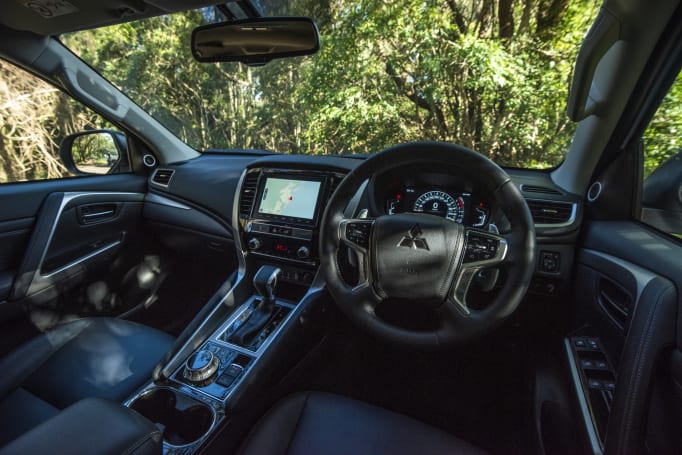
Storage could be better - there's a pair of cupholders between the seats, a smallish centre console bin, and a small storage caddy in front of the gear shifter, and there's also a section below the gear selector area which is rendered a little bit useless in day-to-day driving.
The presentation is really nice - there's lots of nice materials, the leather on the seats feels really good, and the seat comfort is the best of this bunch. Plus the steering wheel feels nice in the hand, and it also has paddle shifters so you can get sporty! (The Fortuner does, too).
Up front in the Ford Everest Titanium it certainly feels more upmarket than its competitors - it's more expensive, and it feels it, as well. It doesn't quite have the same width of the cabin as the Prado, but it does feel substantial inside and there are some nice design cues including a section of painted finish on the dashboard, which even spells out that you're in an Everest and not a Ranger – but there are a lot of other Ranger elements inside the cabin because that's the vehicle it's based on.

Got the same Sync 3 media screen with manual controls below, but we did have some issues with the screen slowness at times. But there's a nice digital driver info screen in front of the driver for the digital speedo, plus for storage there's also cupholders, a storage bin in front of the shifter, and a reasonably sized centre-console bin.
The seats are fairly comfortable, and they're heated in this spec as well. And because you're getting a top spec model, there's also a big panoramic glass sunroof, which is very nice.

We weren't assessing these models on their exterior style or design. You can make up your own mind as to which would look best with a sport exterior pack with a body kit and rear spoiler, but, if you're considering that, you'll need to remove the side steps.
| Model | Score |
| Ford Everest Titanium | 9 |
| Mitsubishi Pajero Sport Exceed | 7 |
| Toyota Fortuner Crusade | 7 |
| Toyota Prado GXL | 9 |



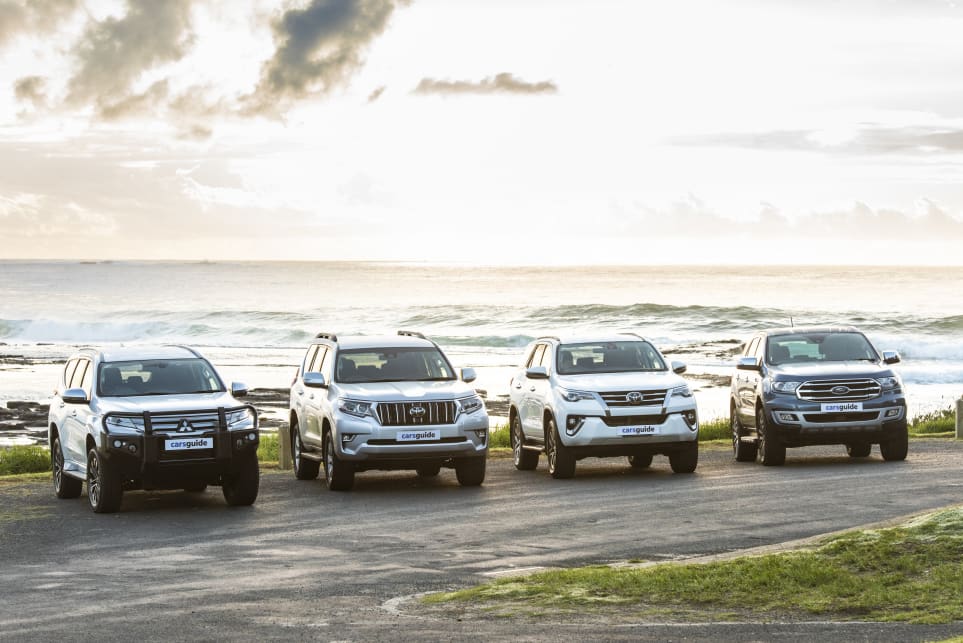

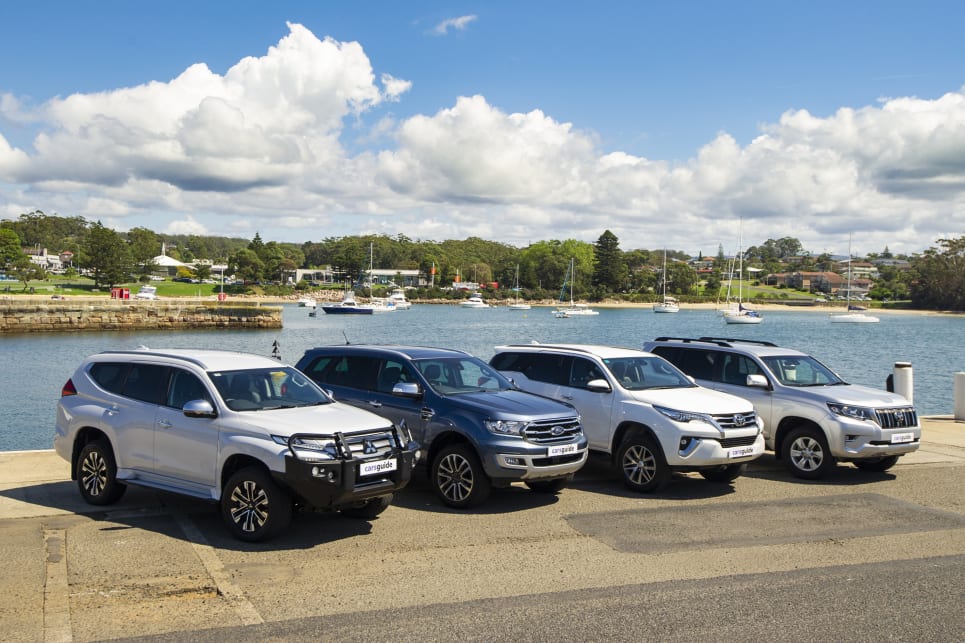
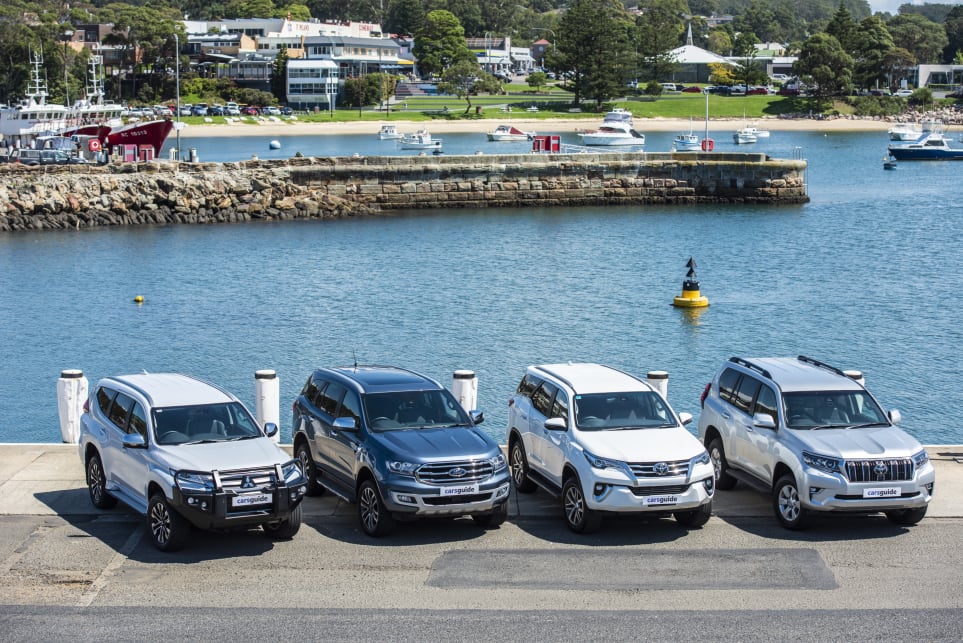


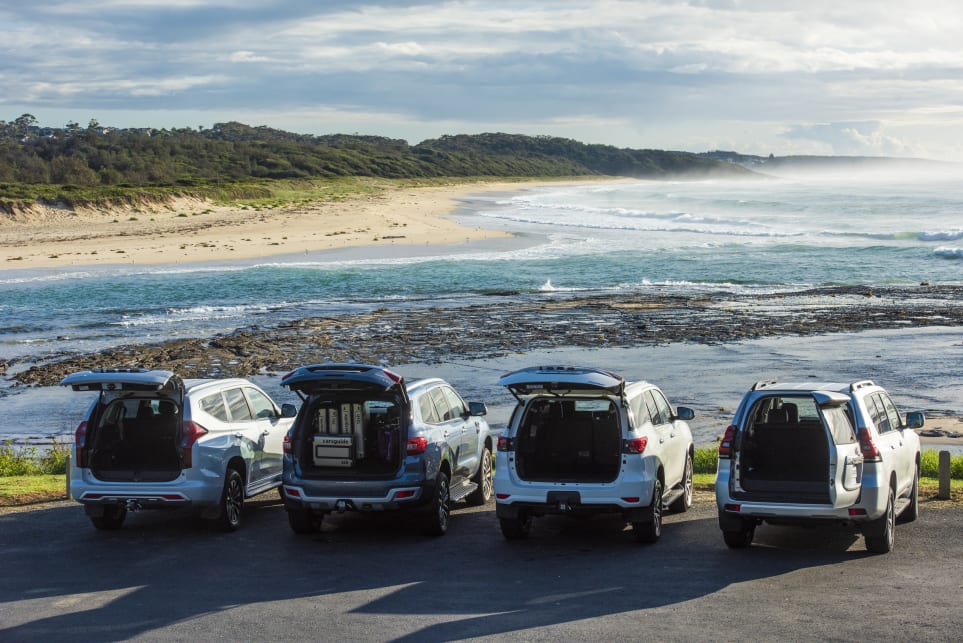
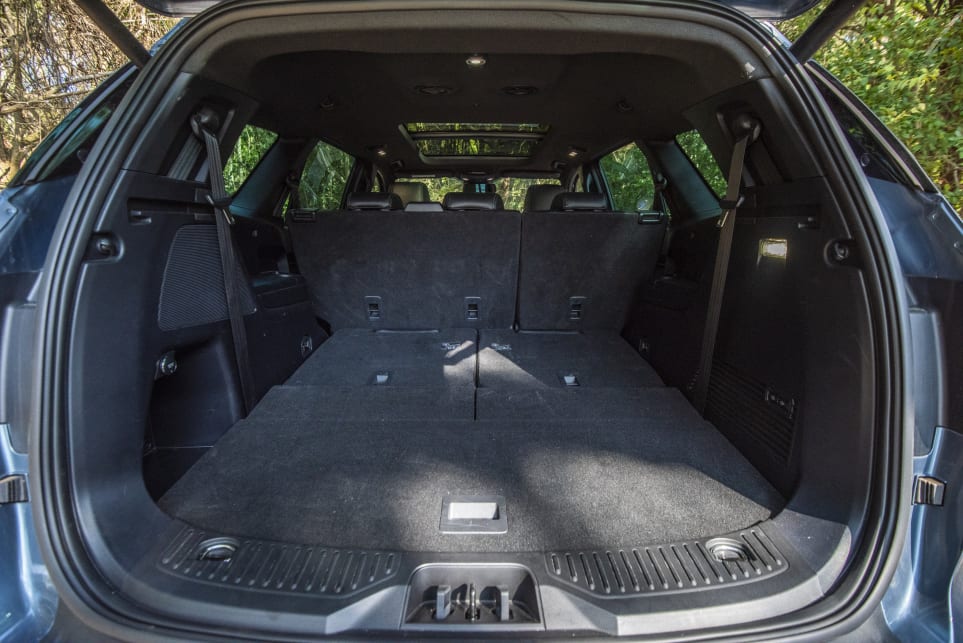


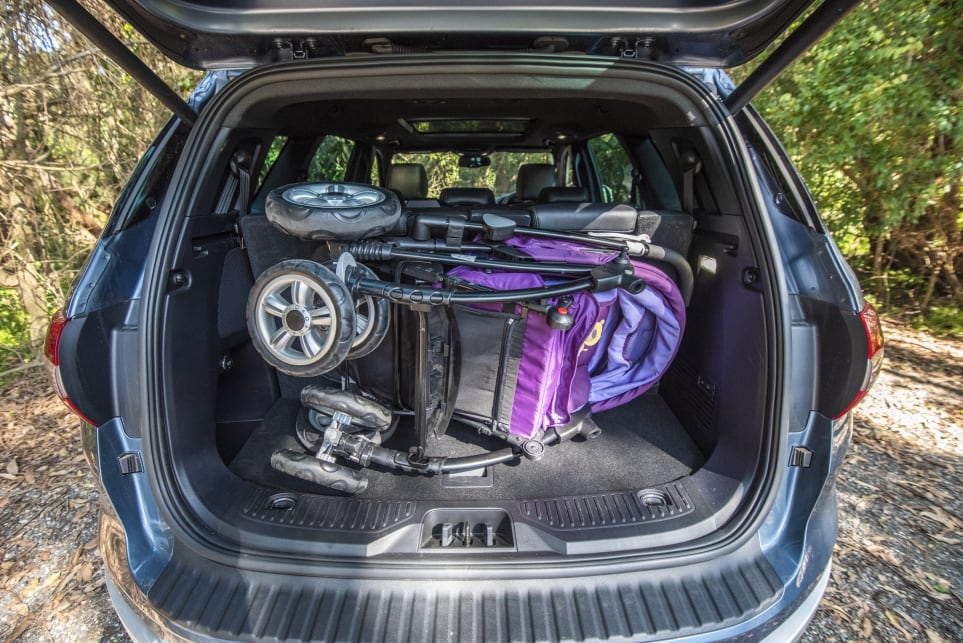
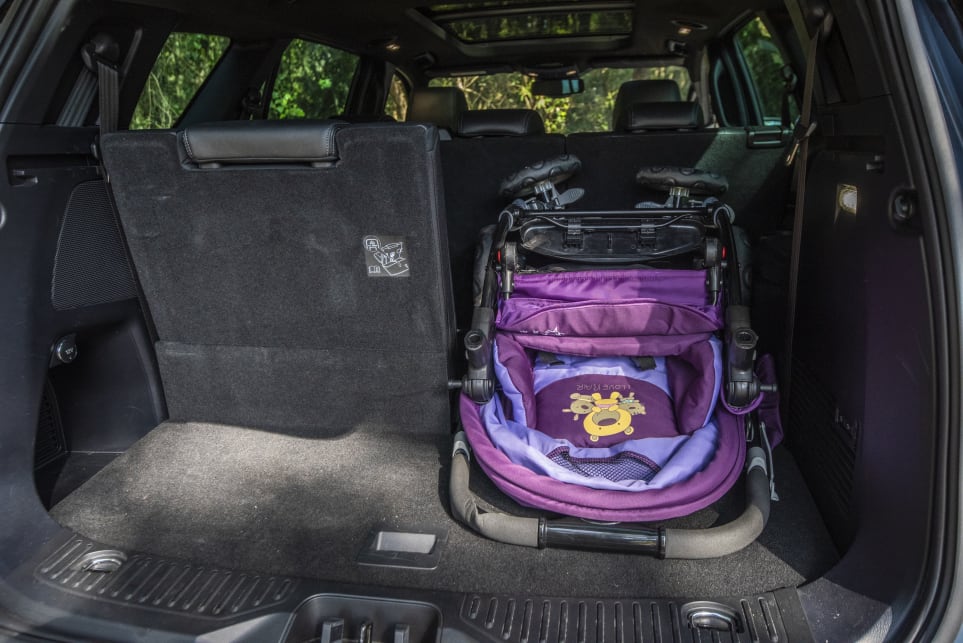
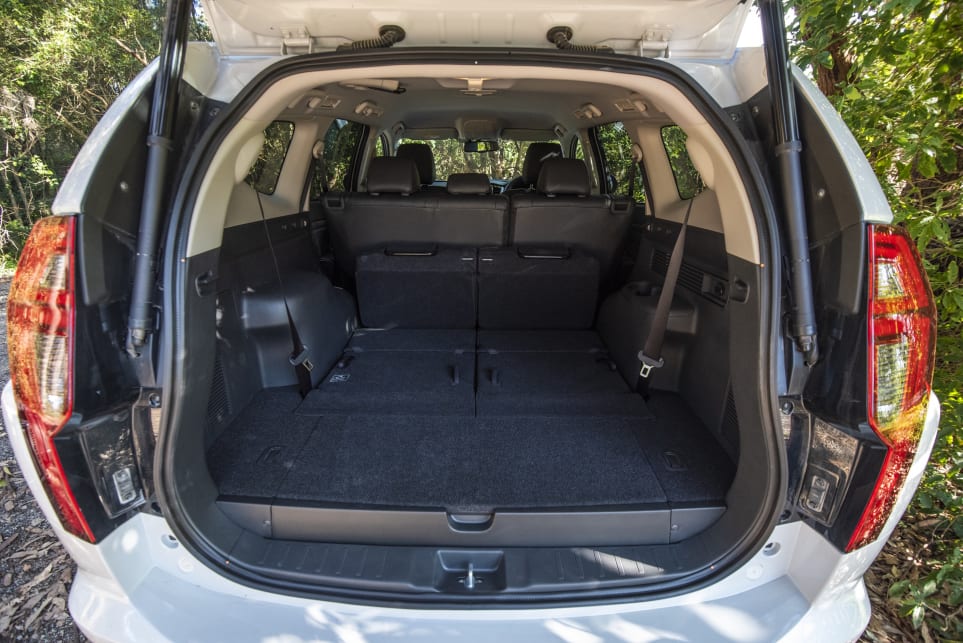
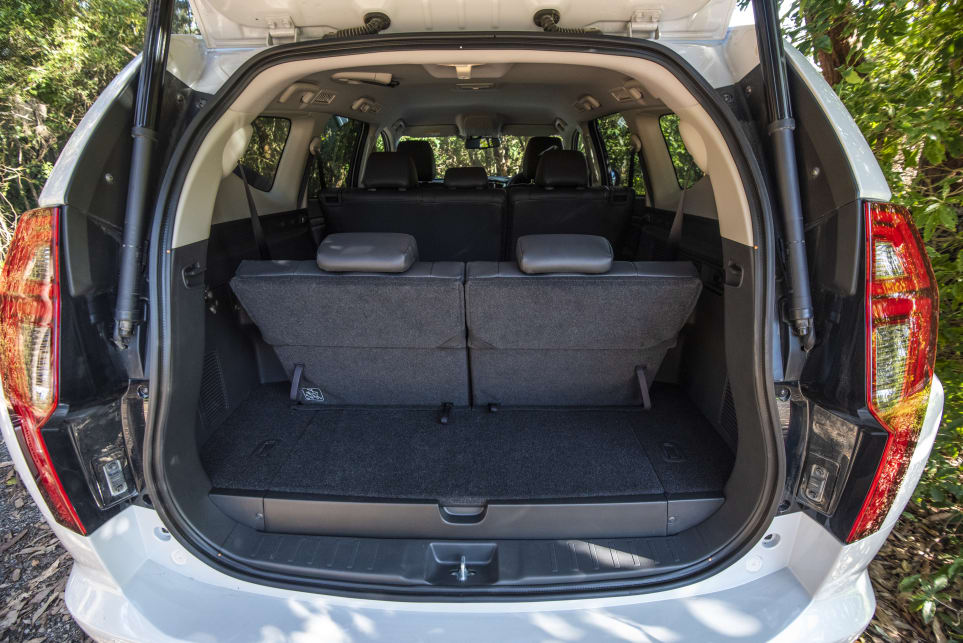
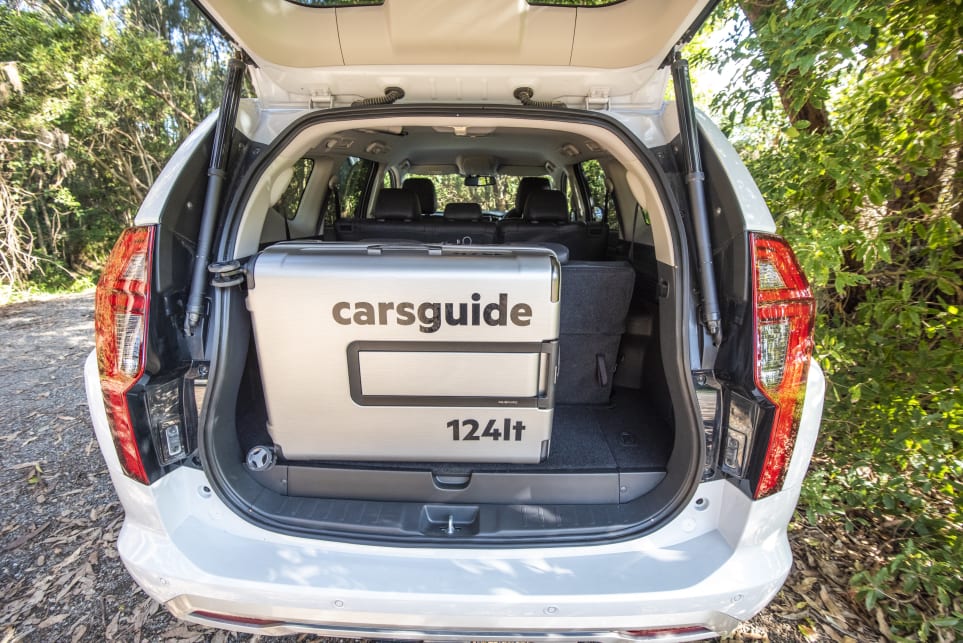


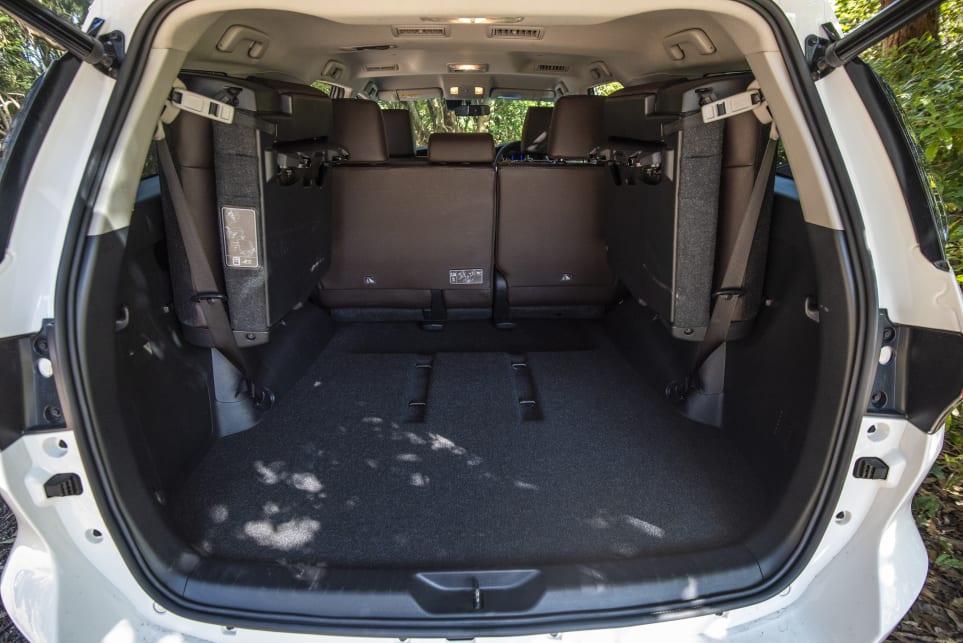
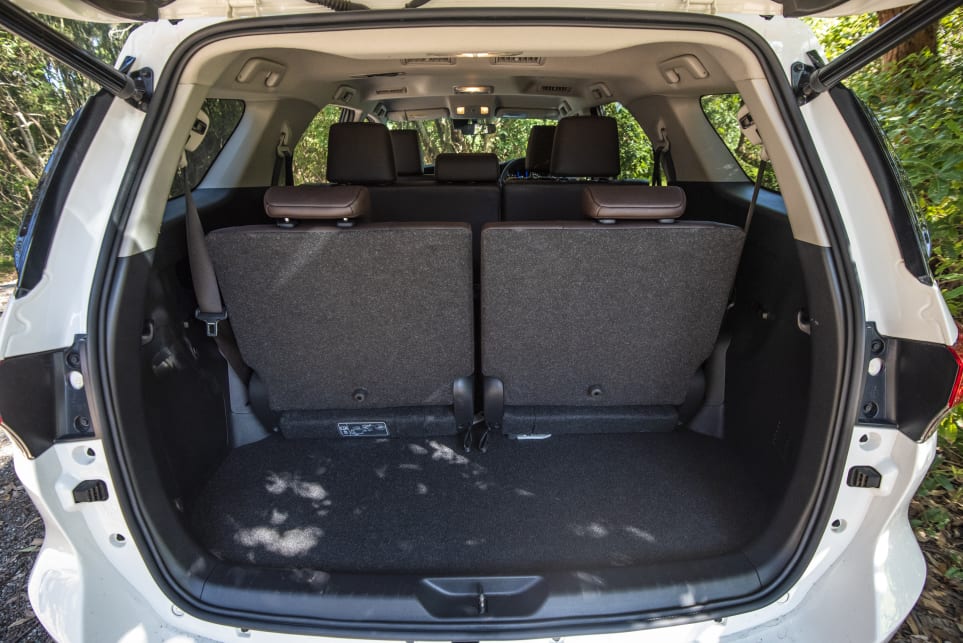

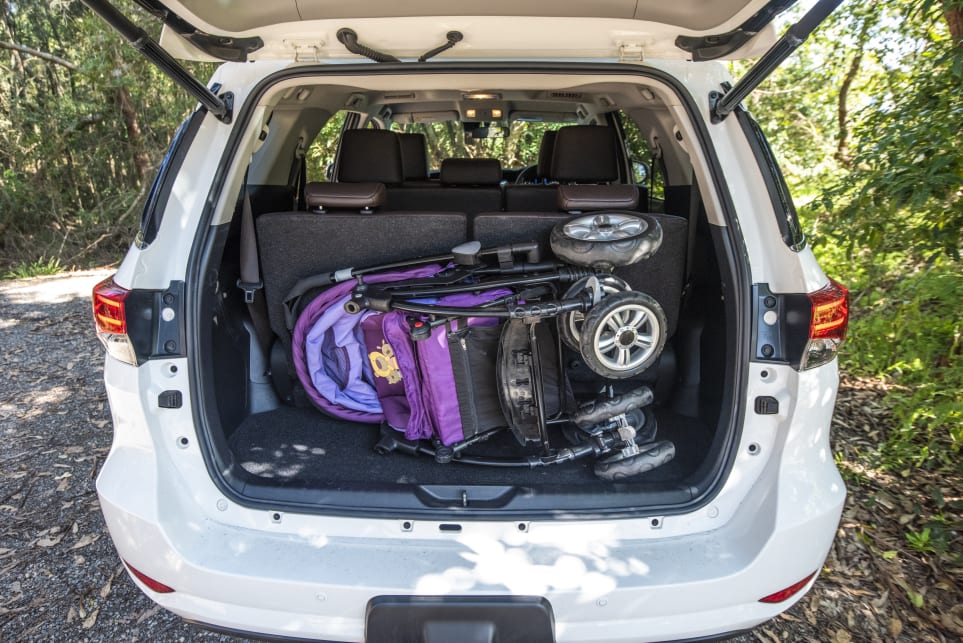
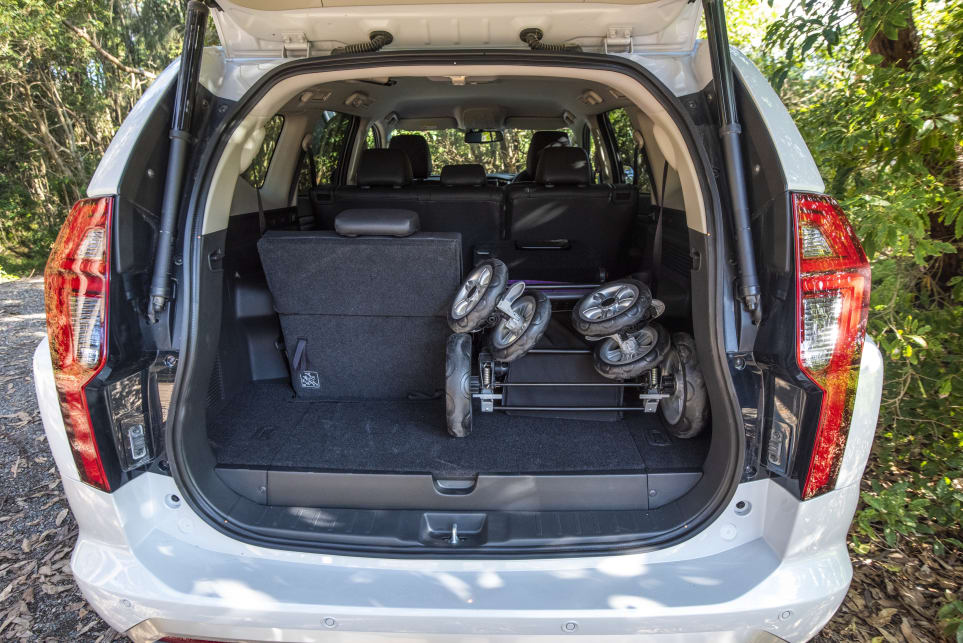

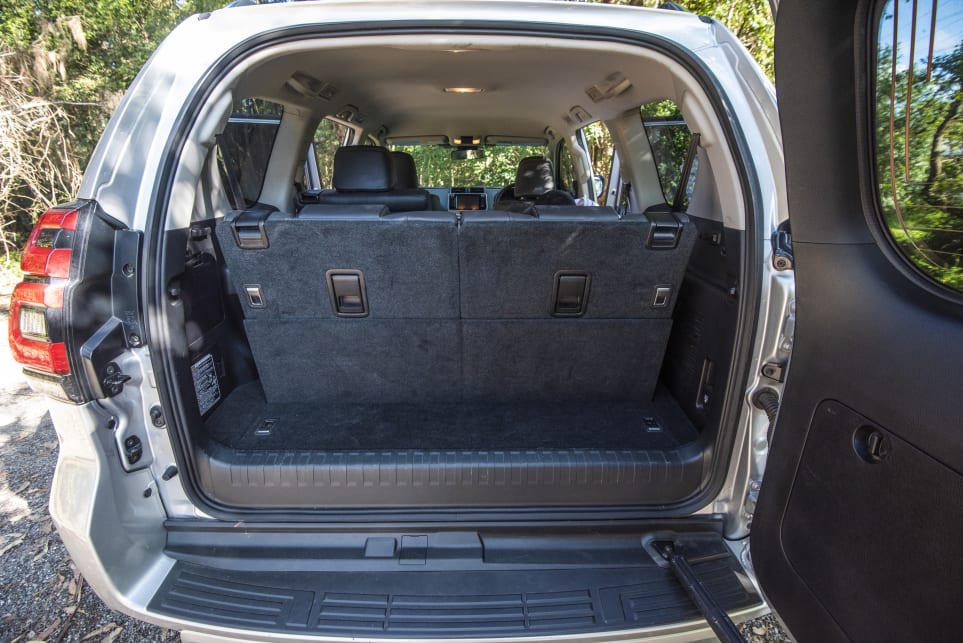
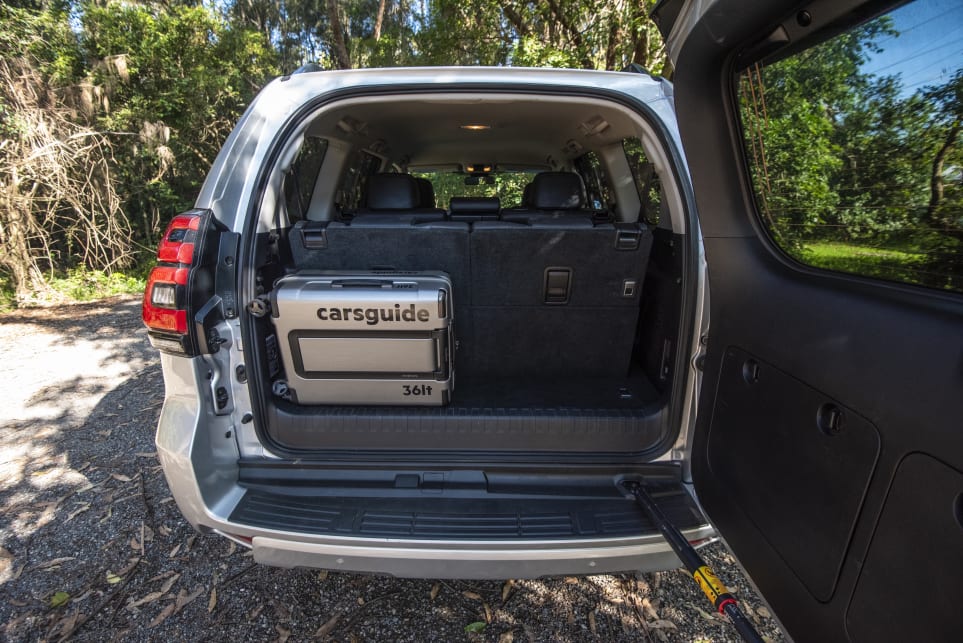
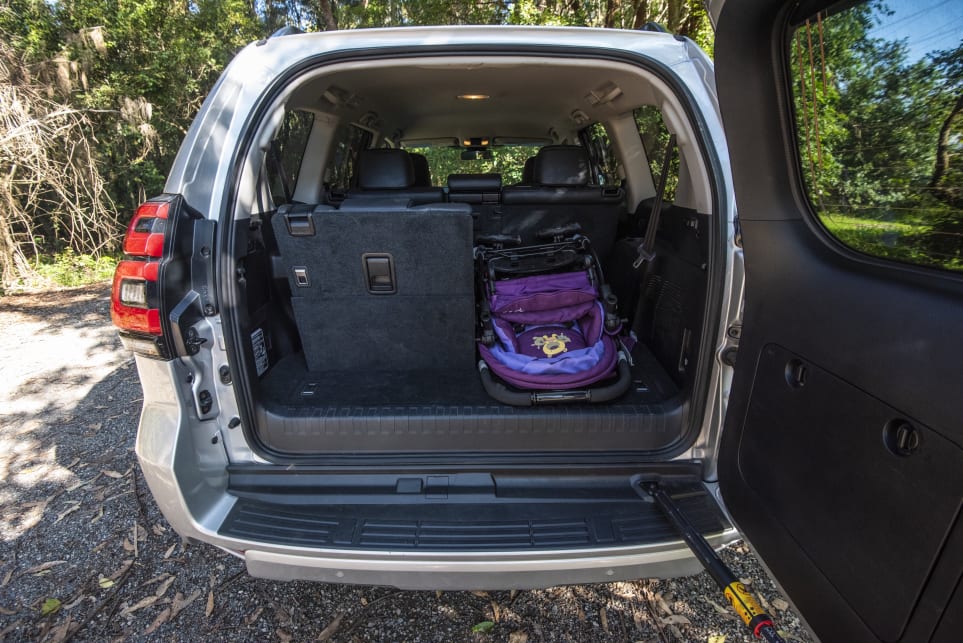
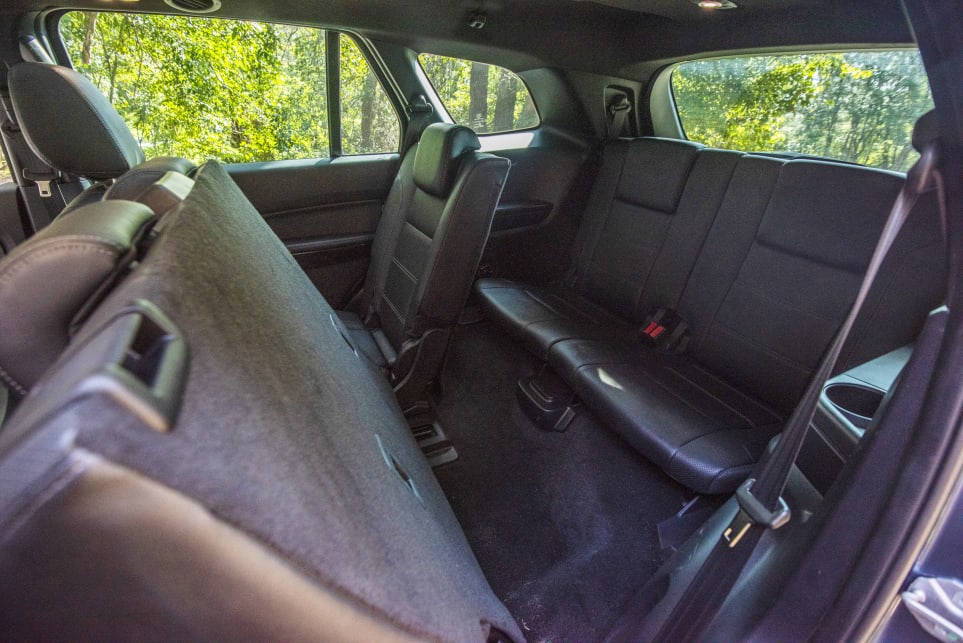

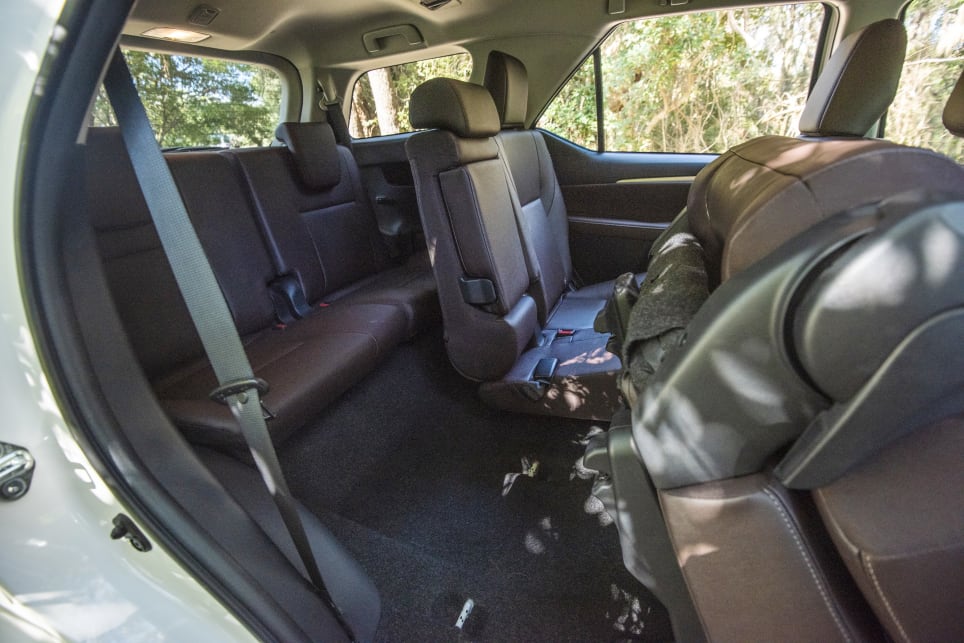
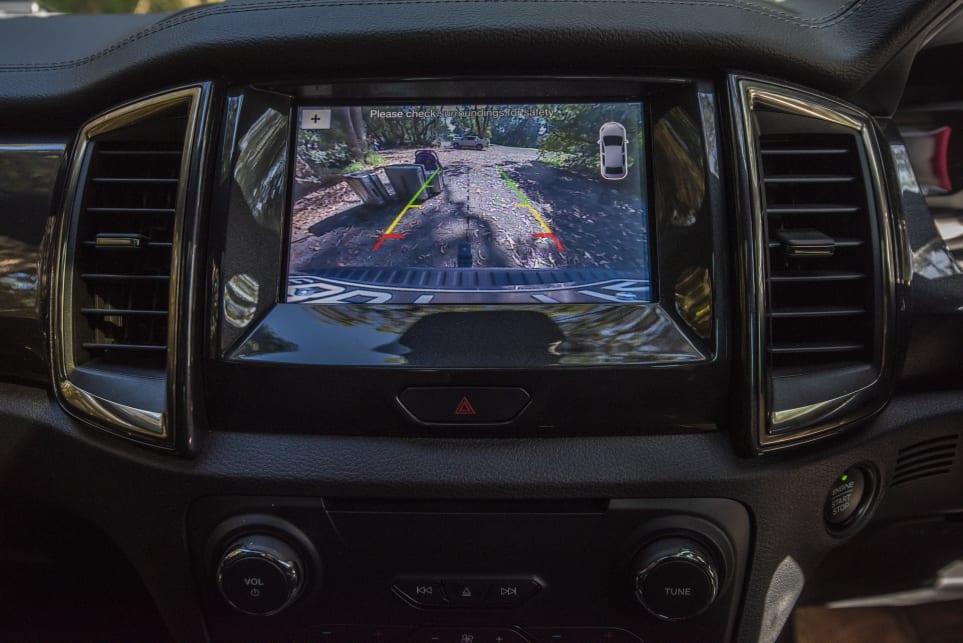
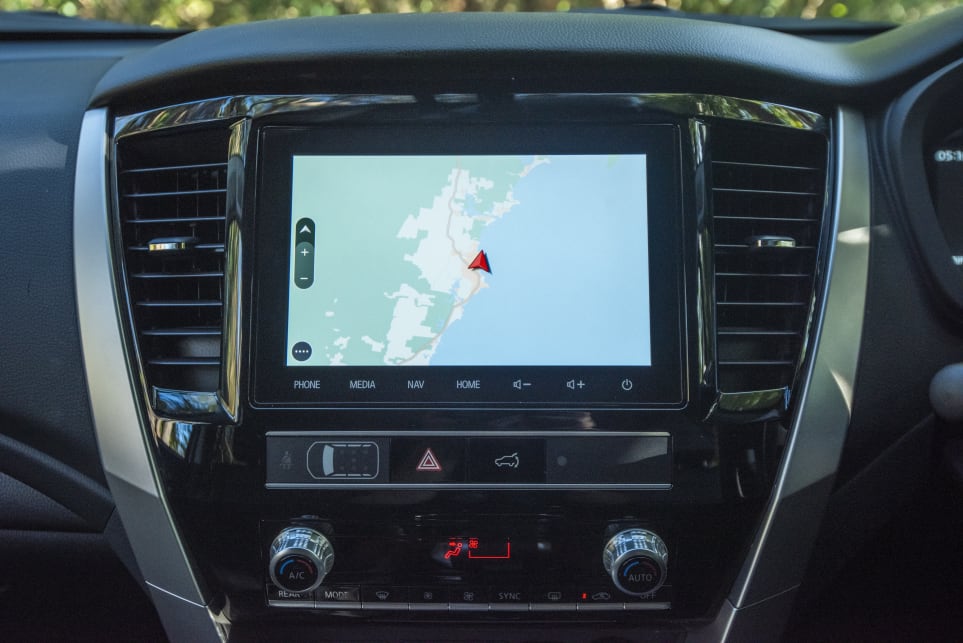
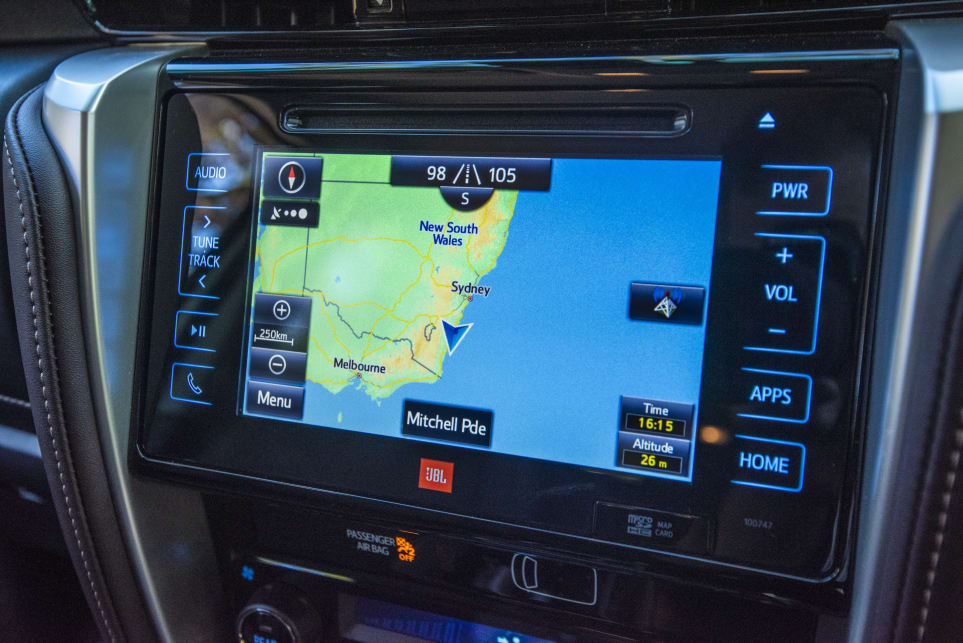
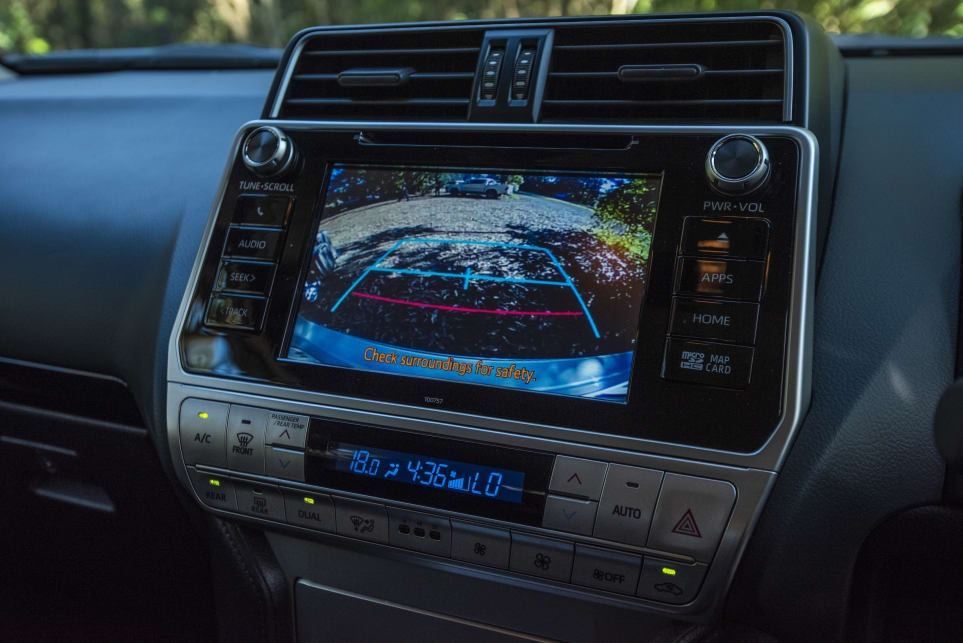
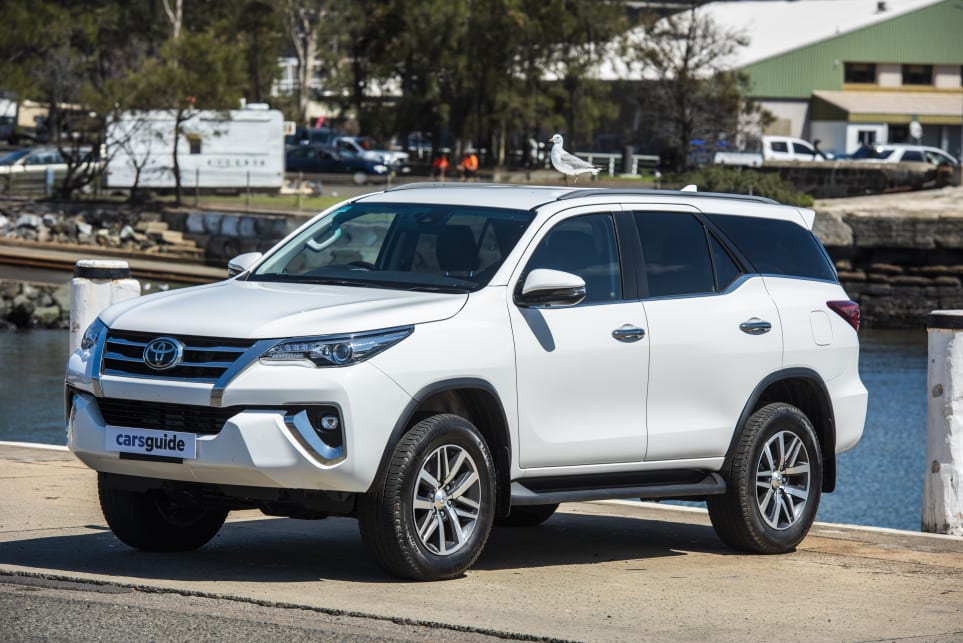

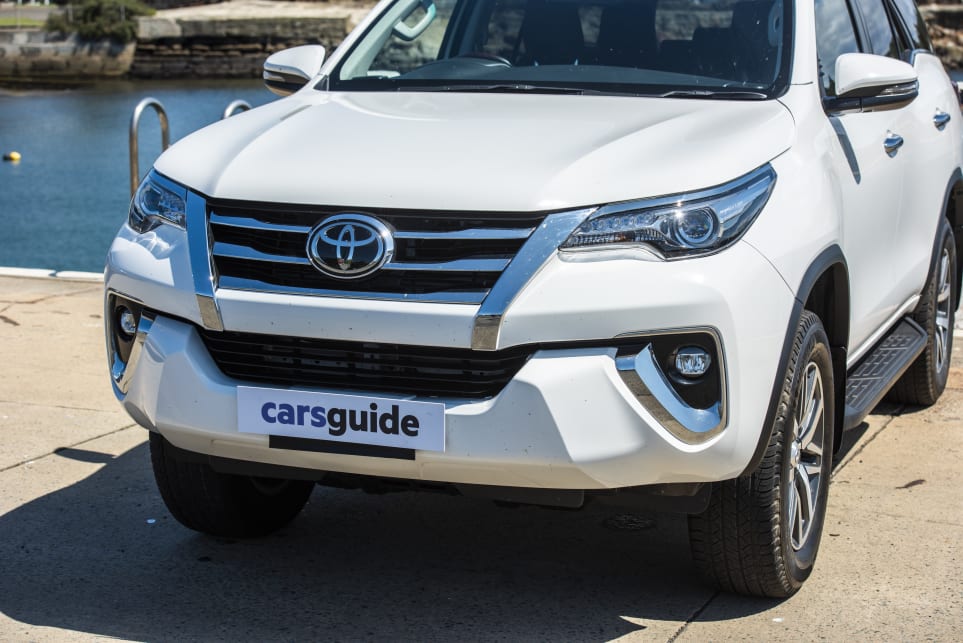
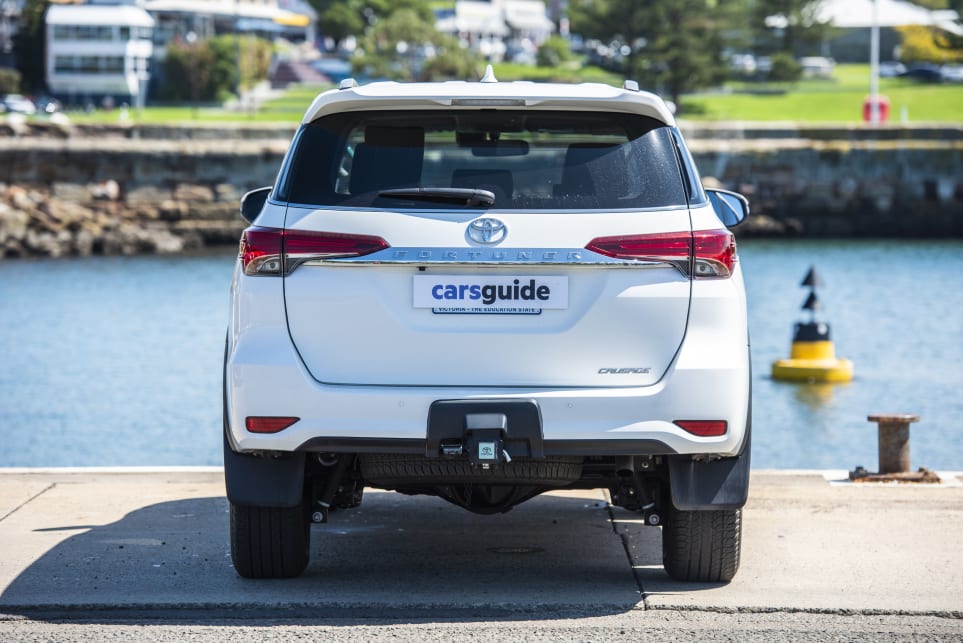


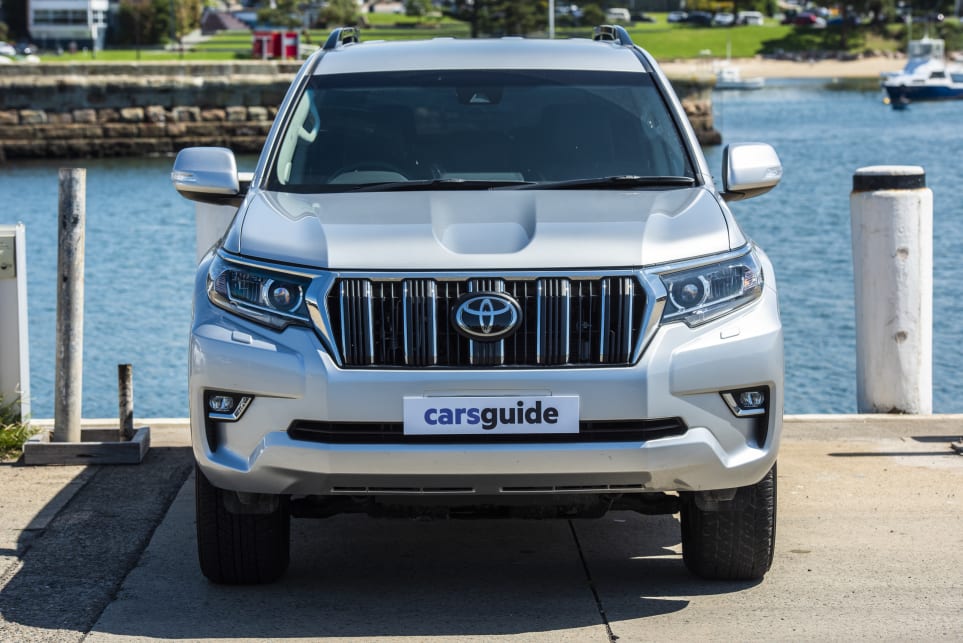

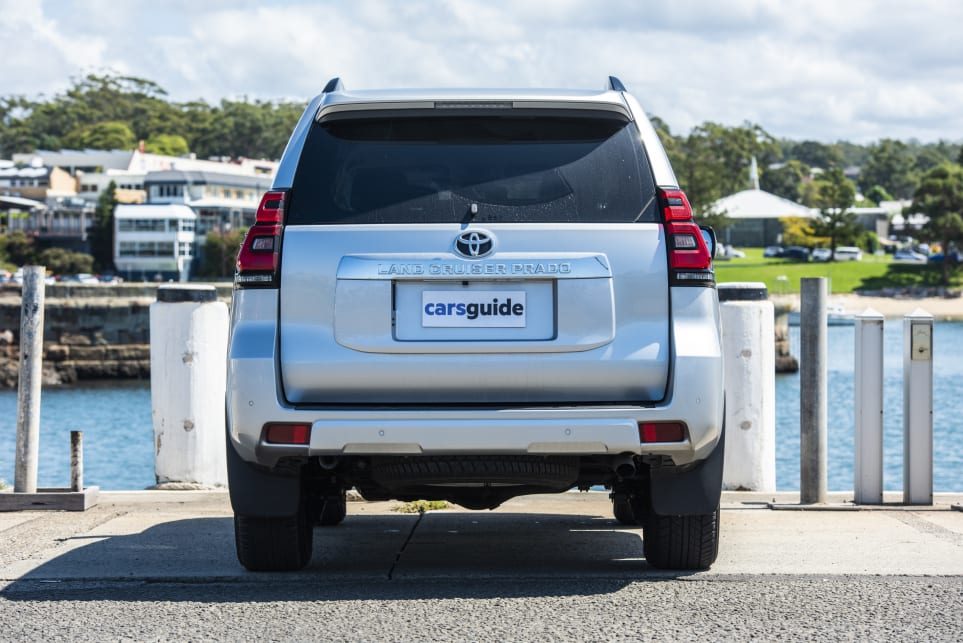
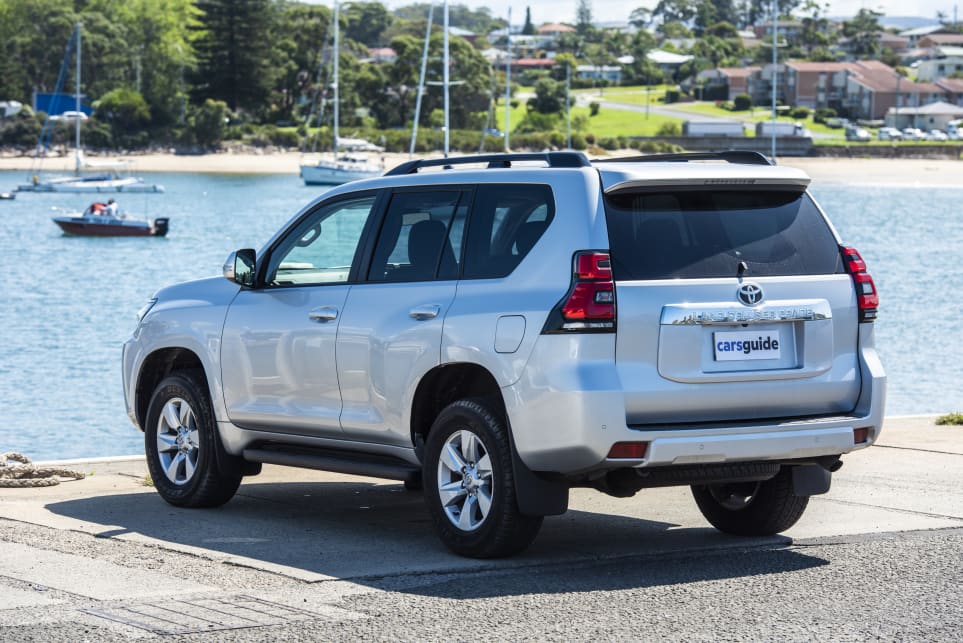
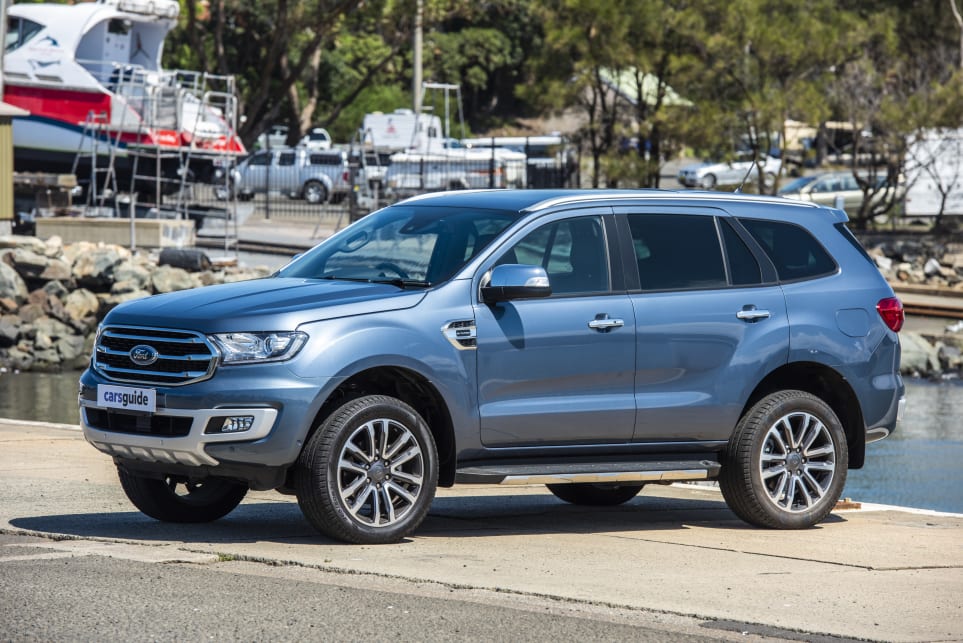


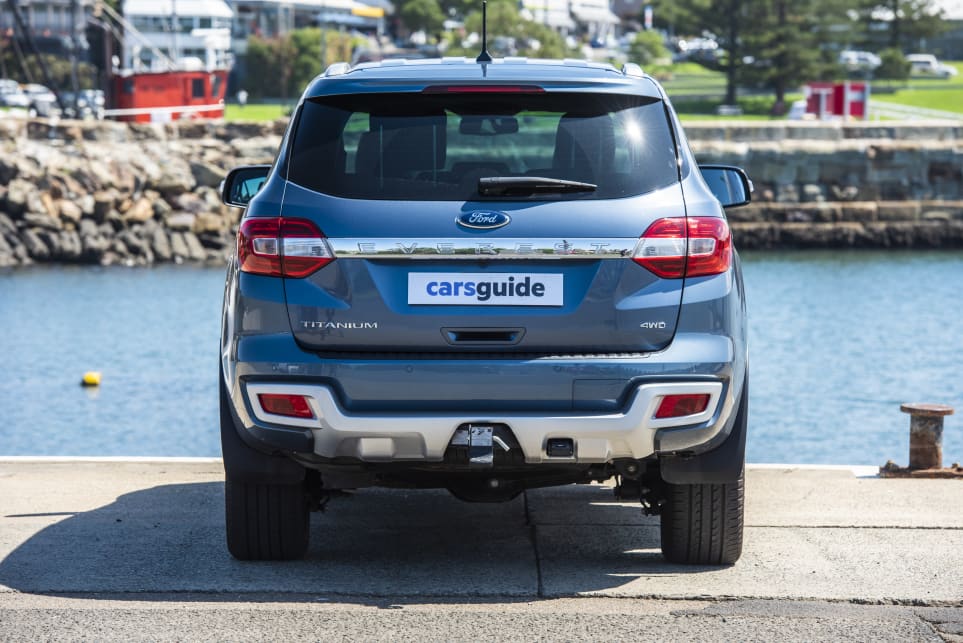
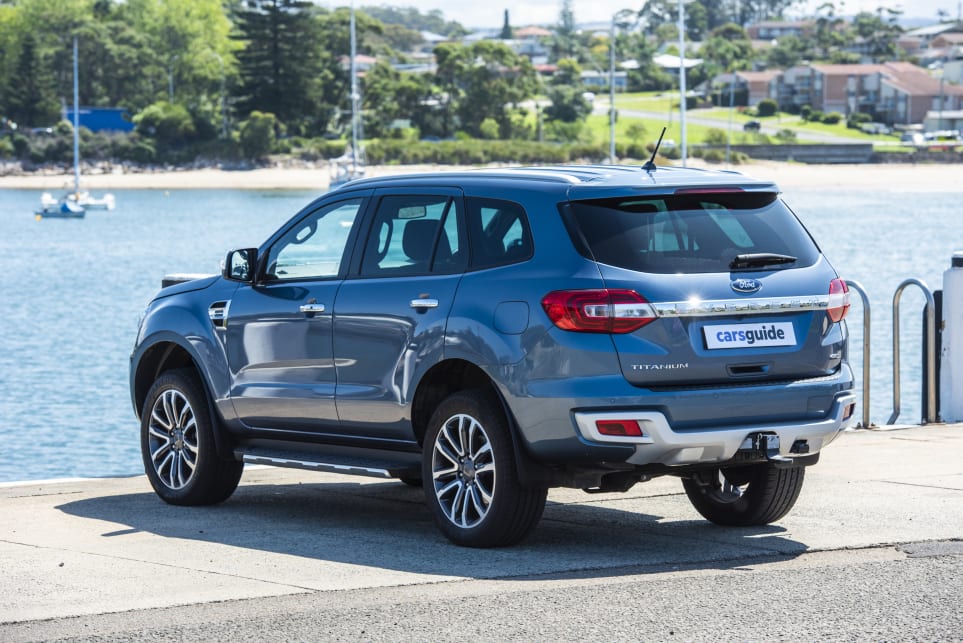
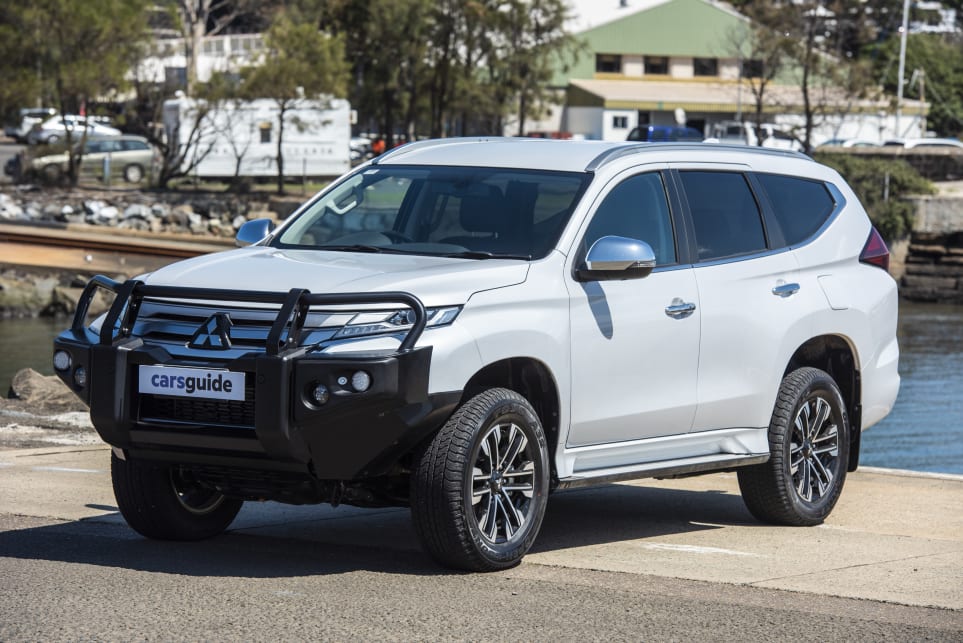
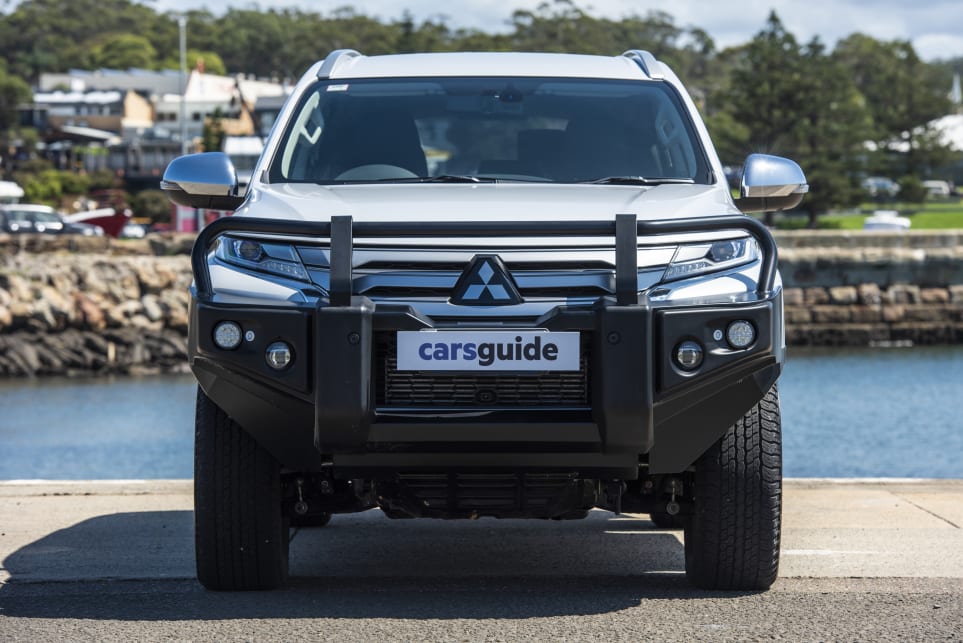

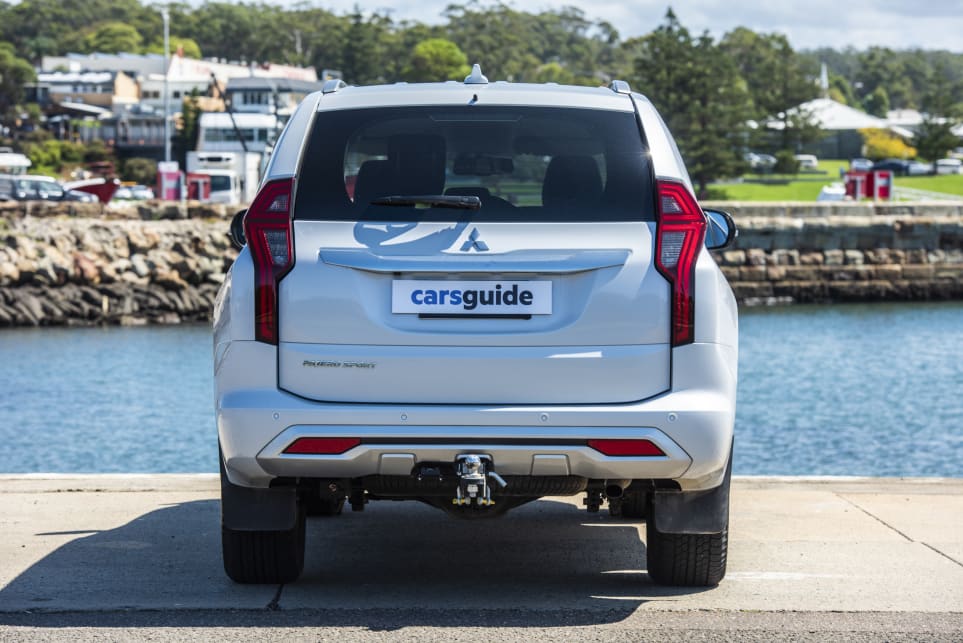
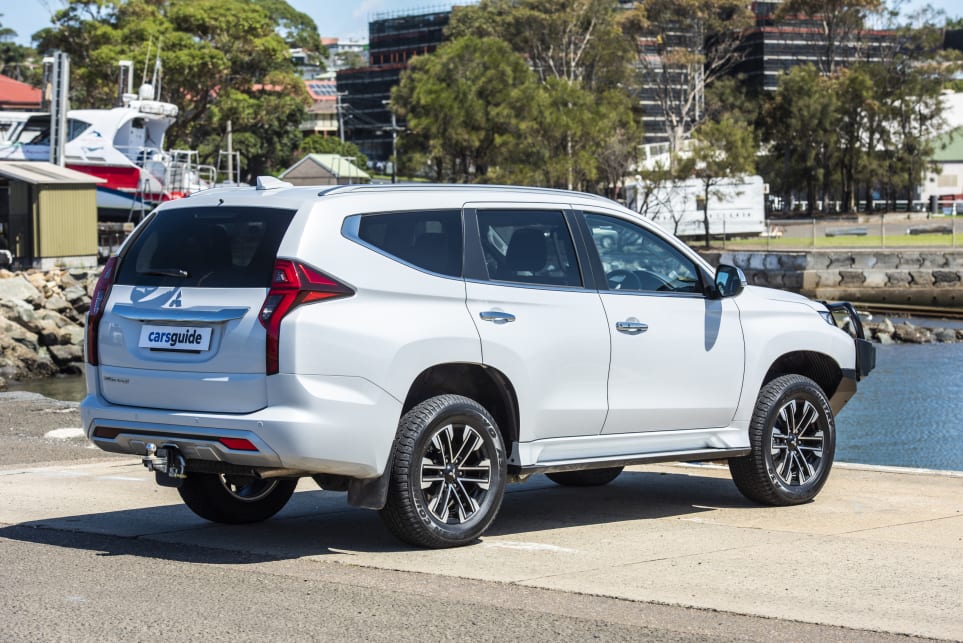
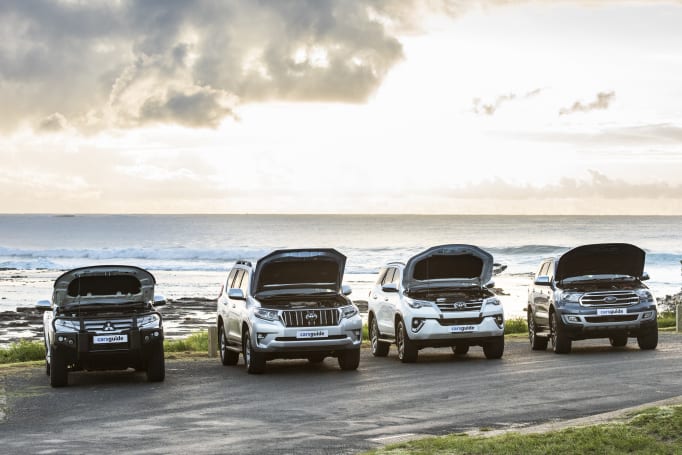
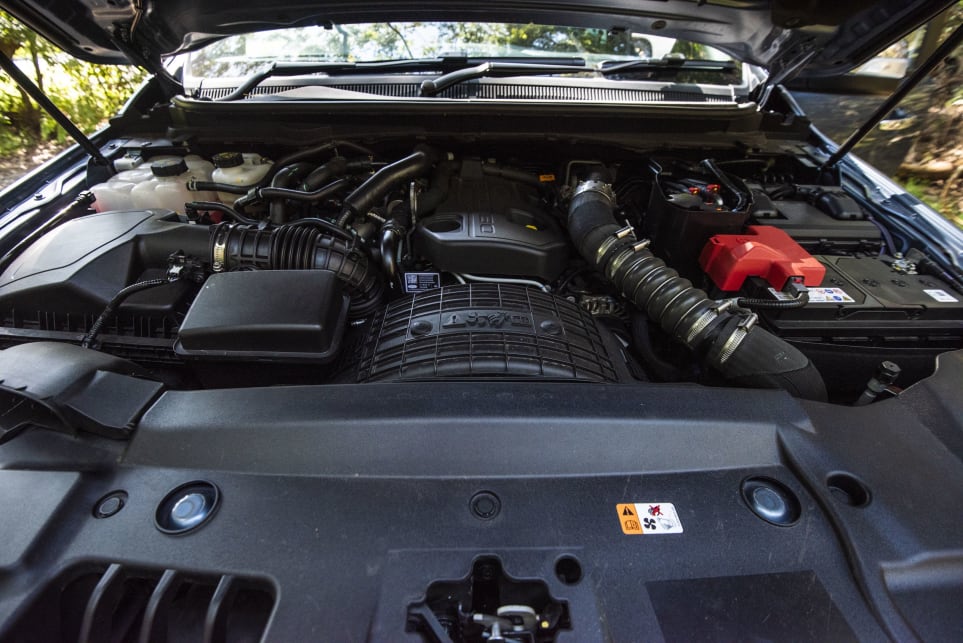
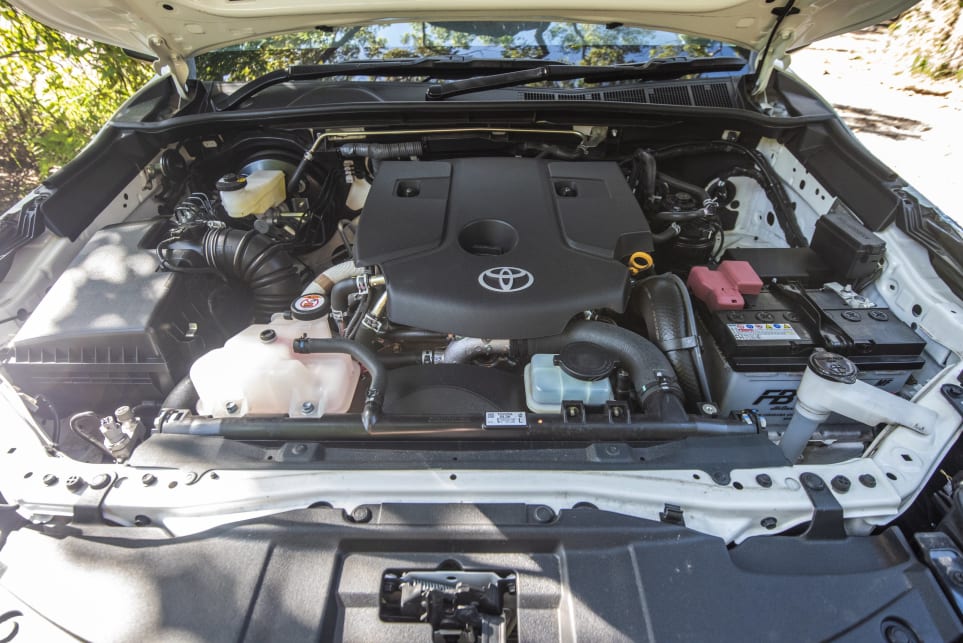
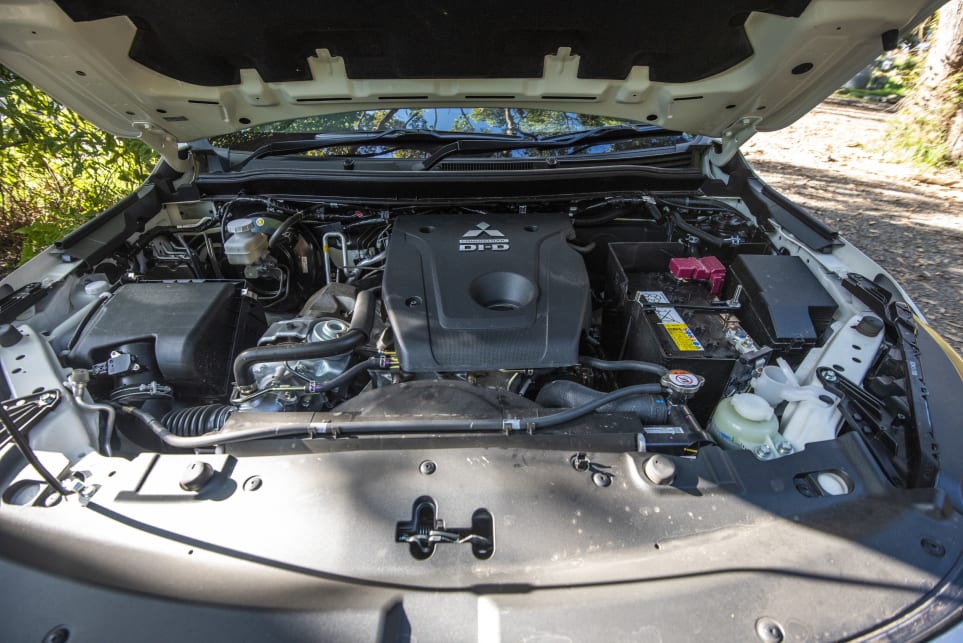
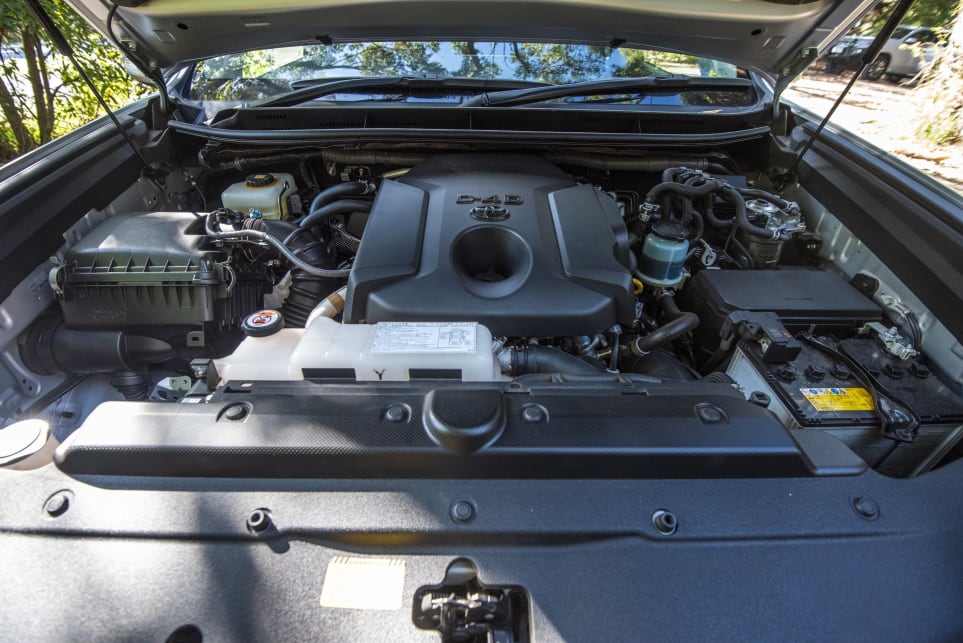

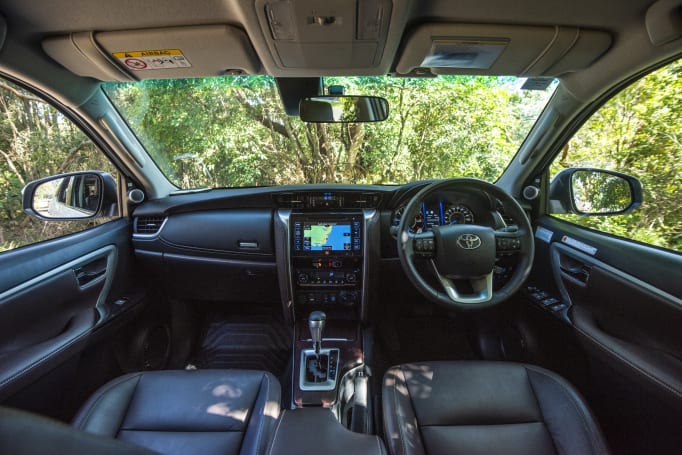


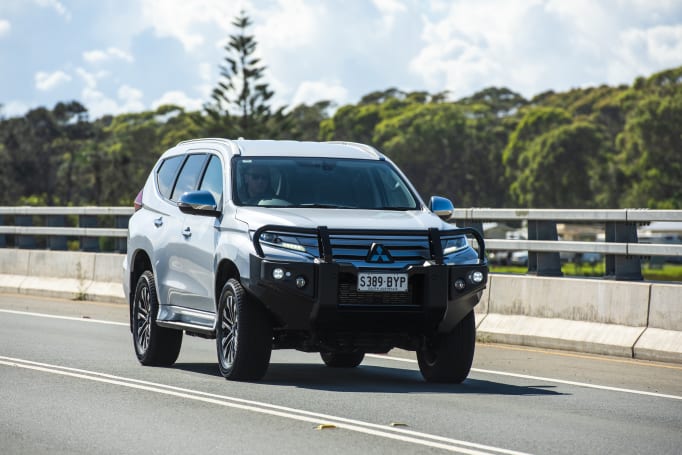

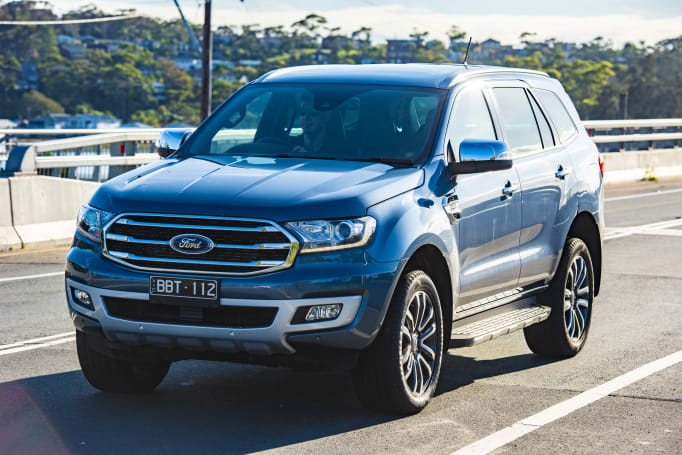
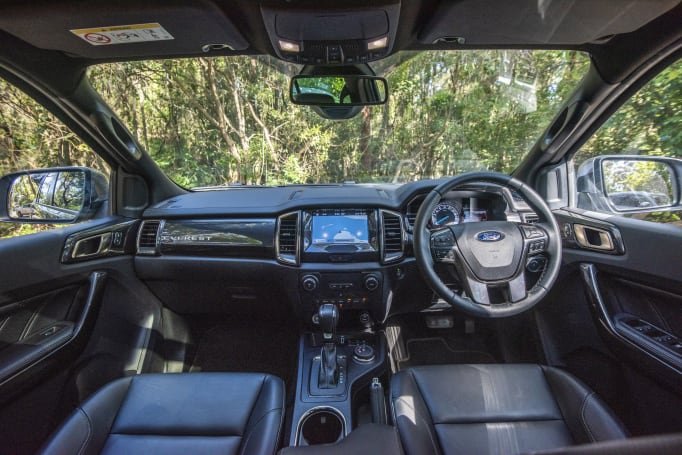
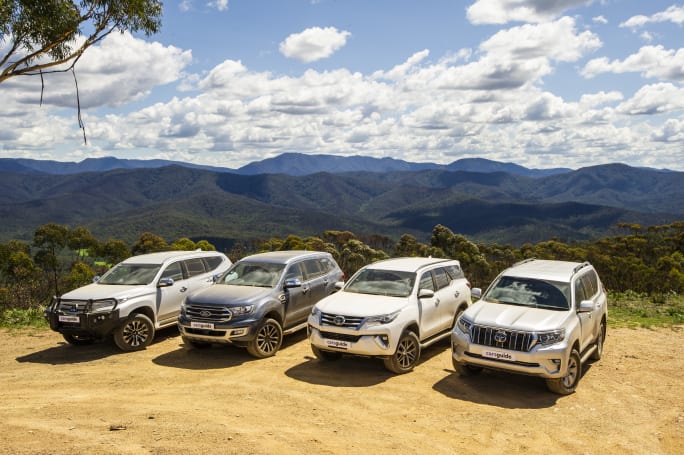

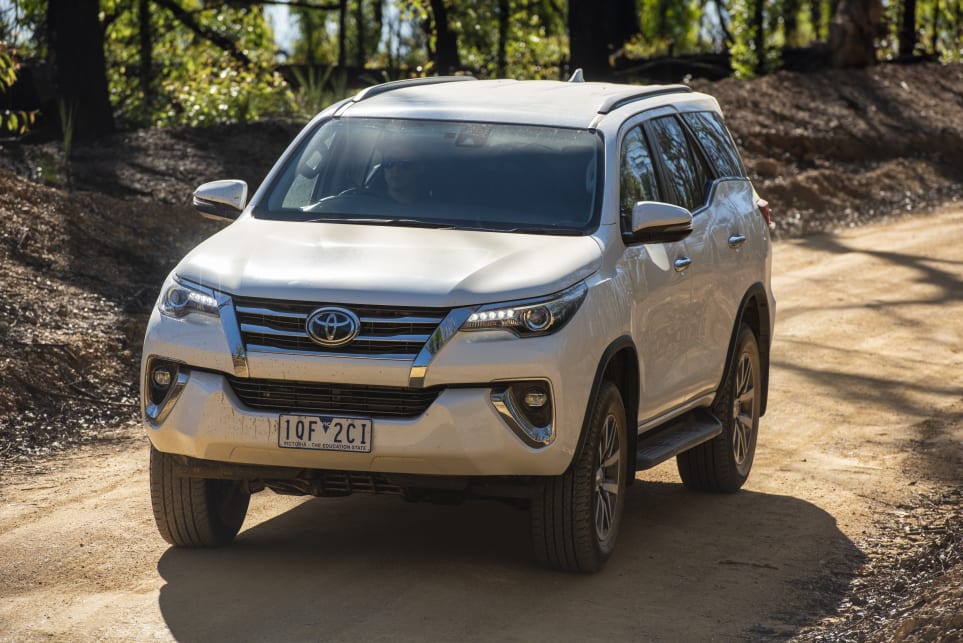
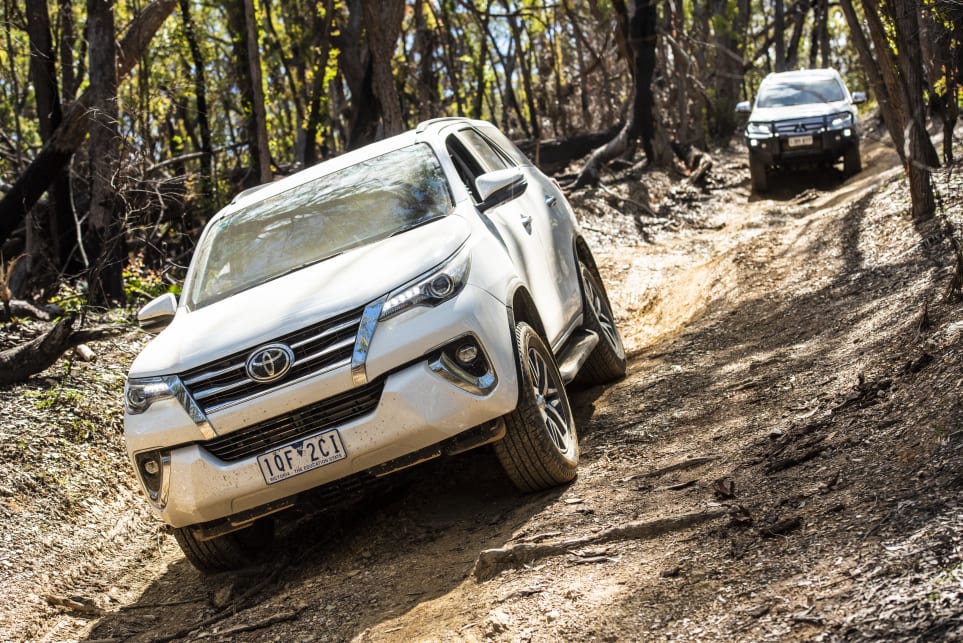
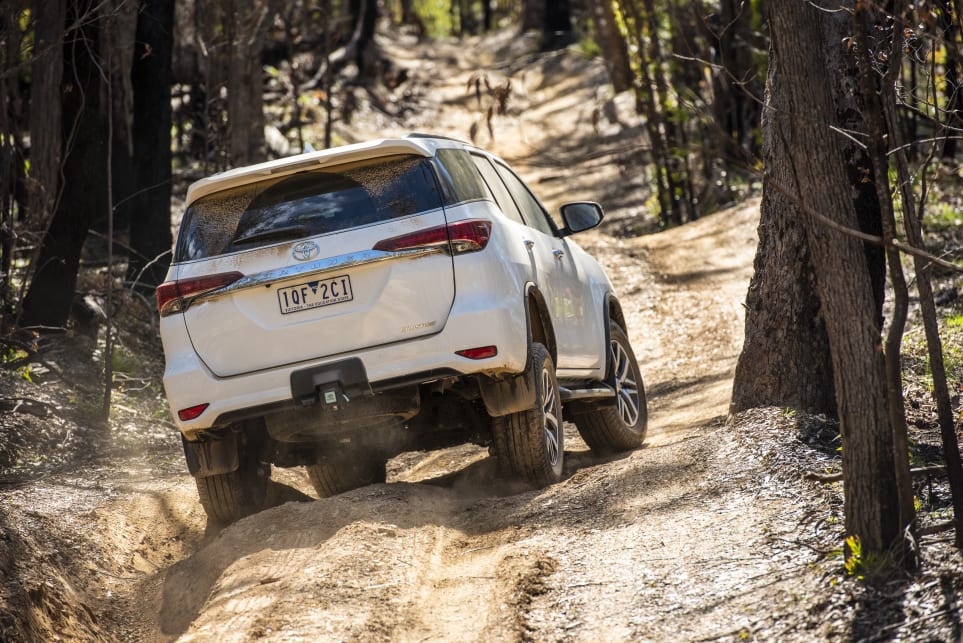
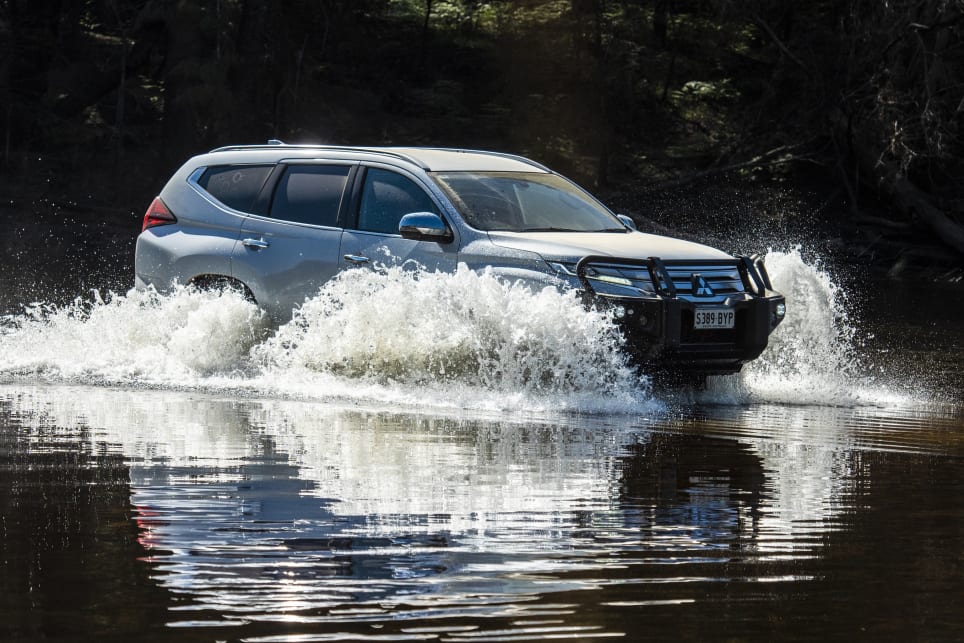

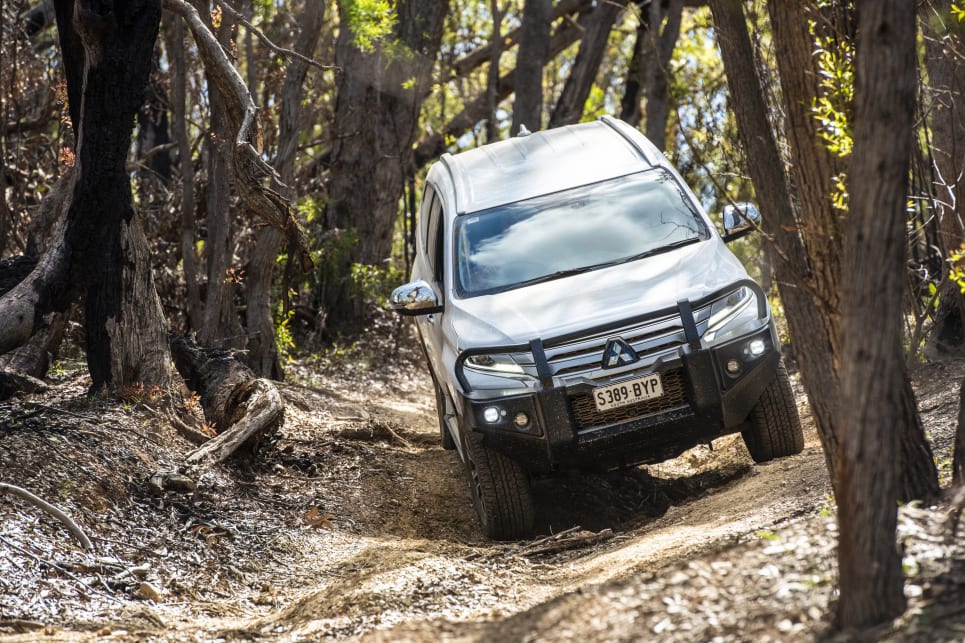


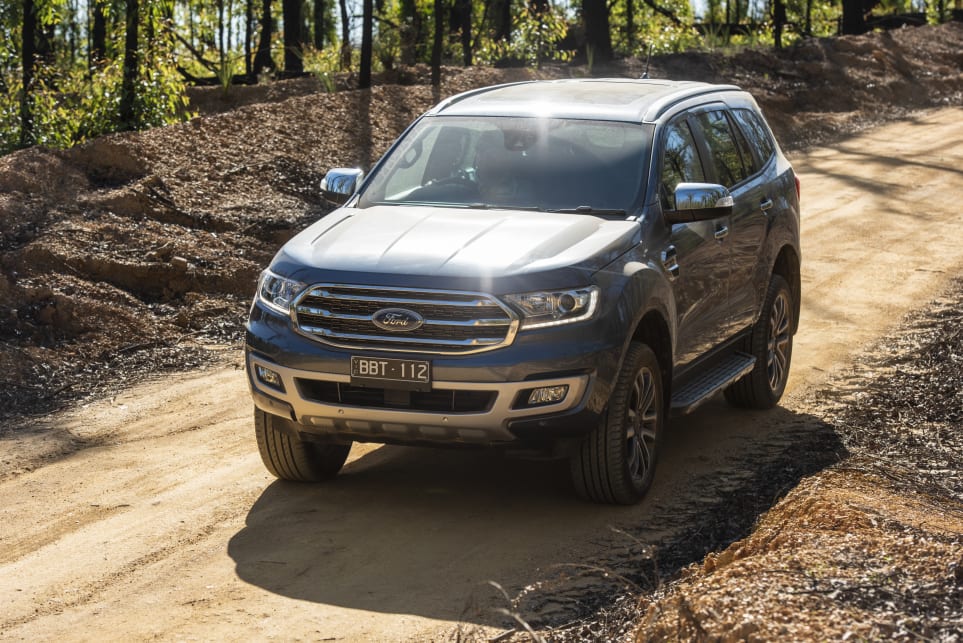
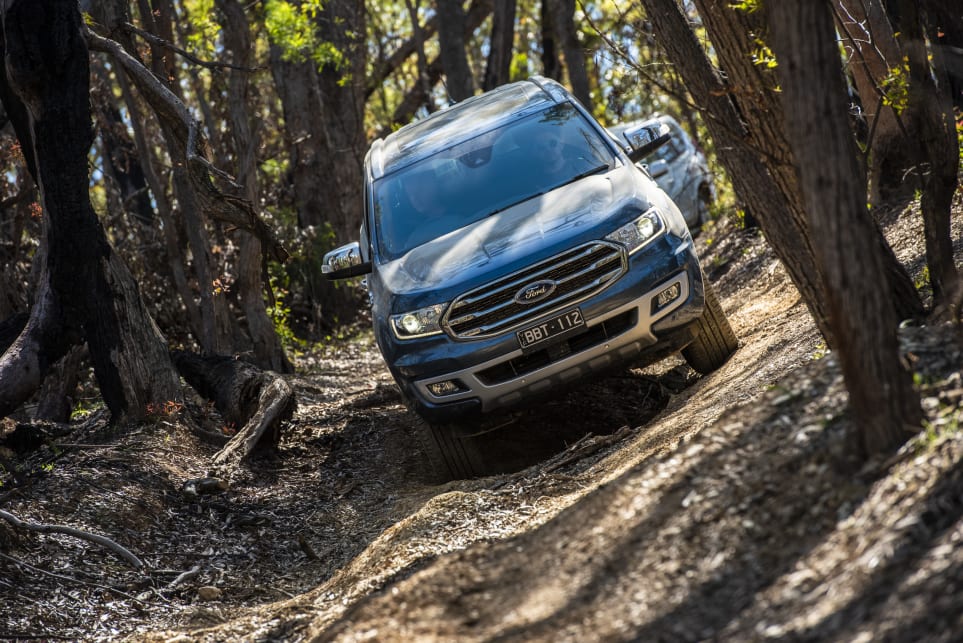


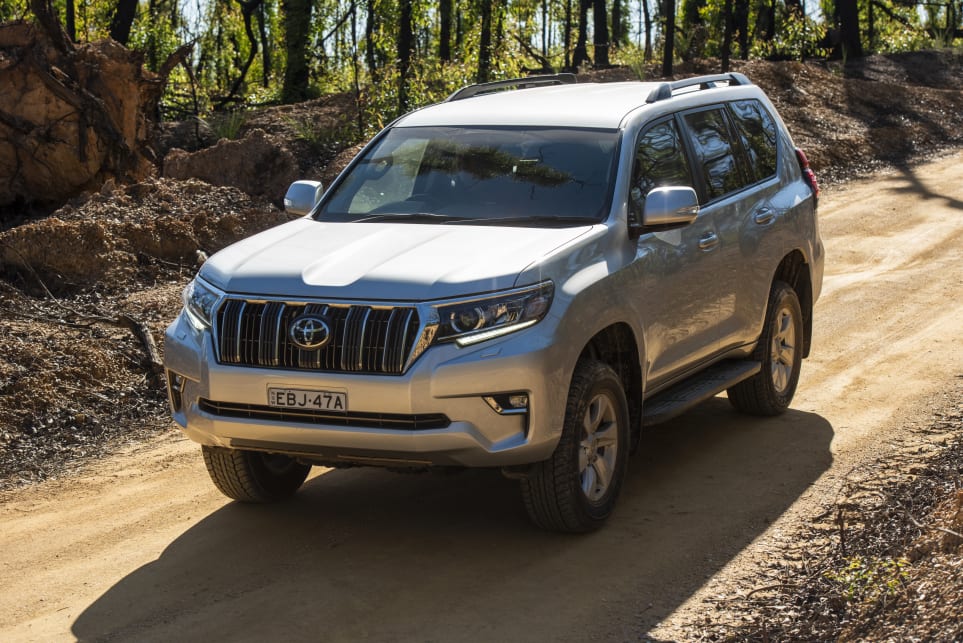
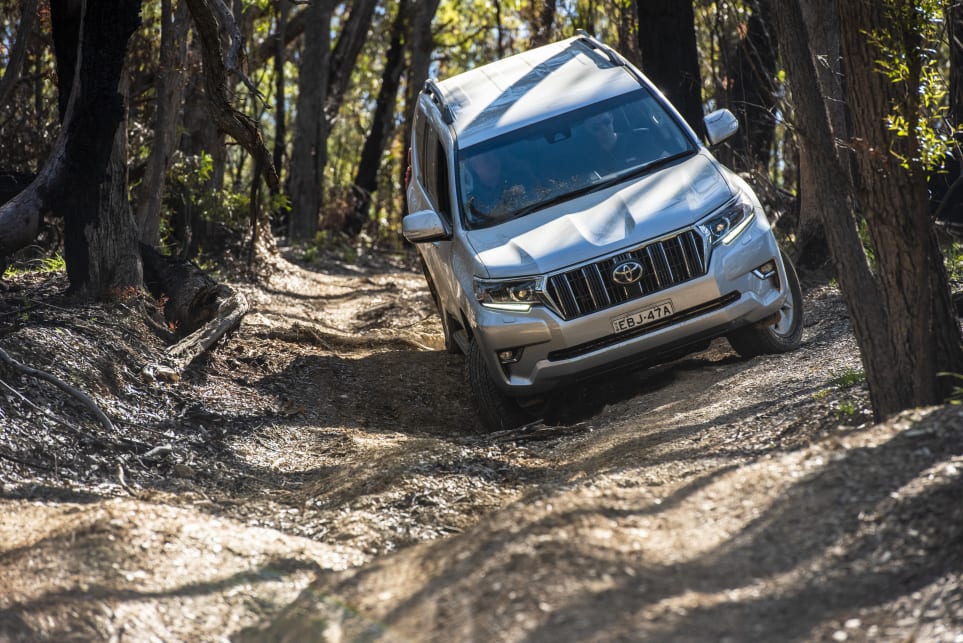


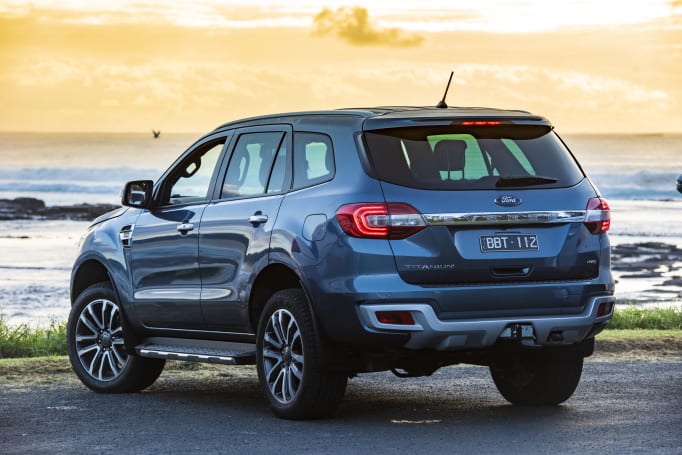
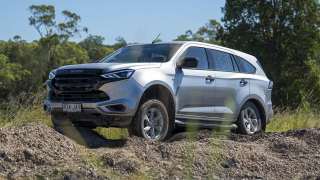



 Lexus NX250
Lexus NX250